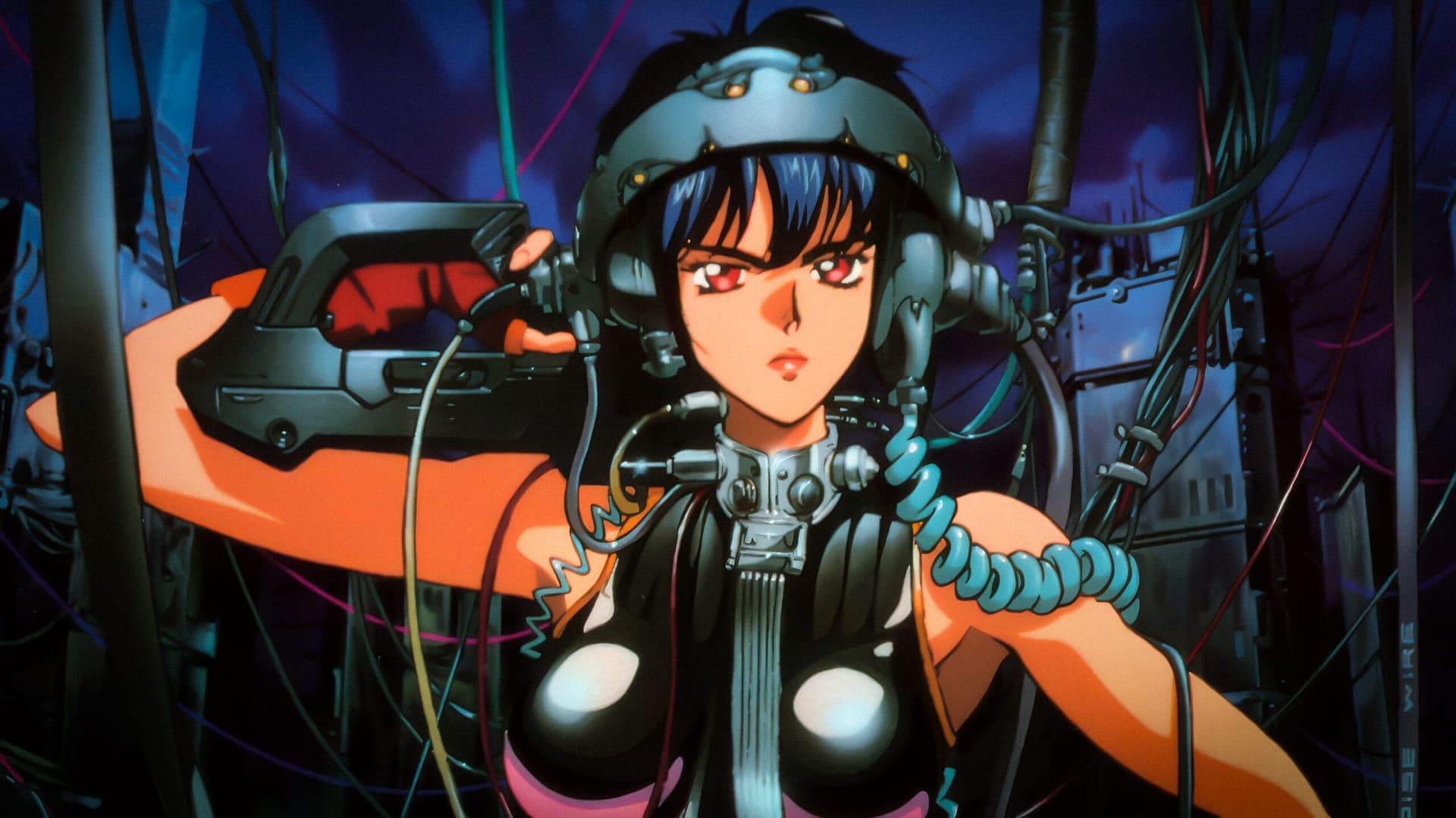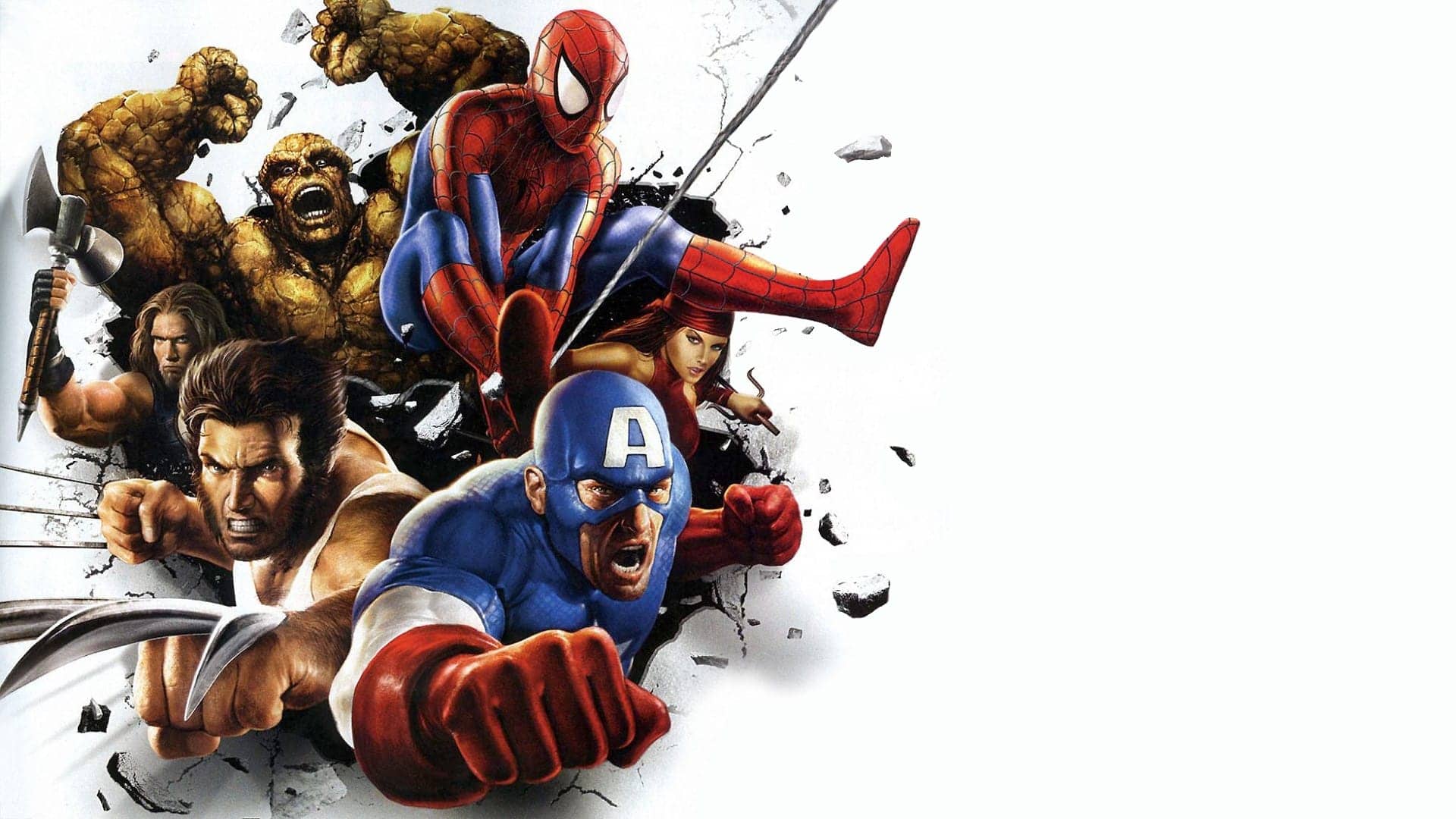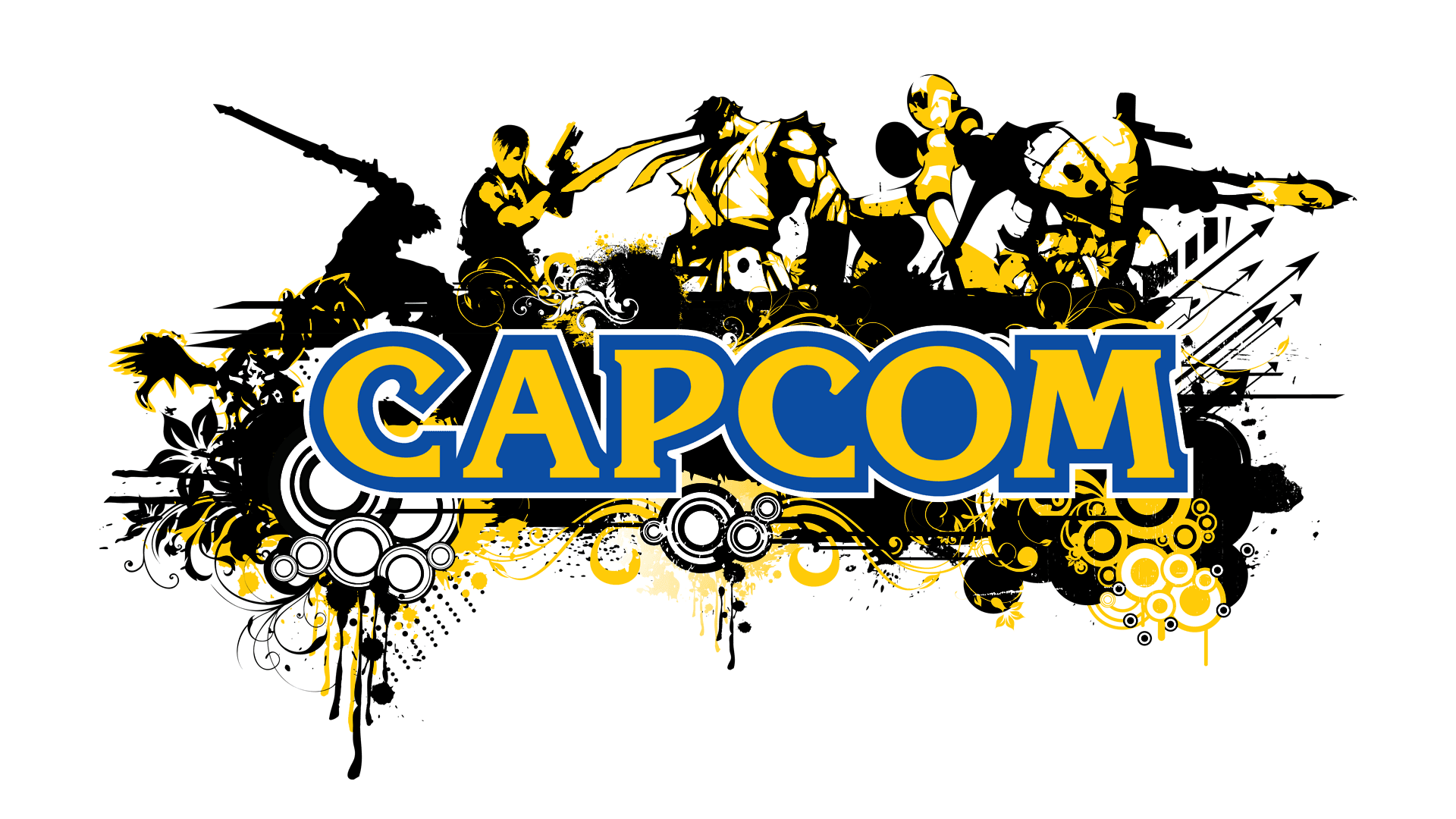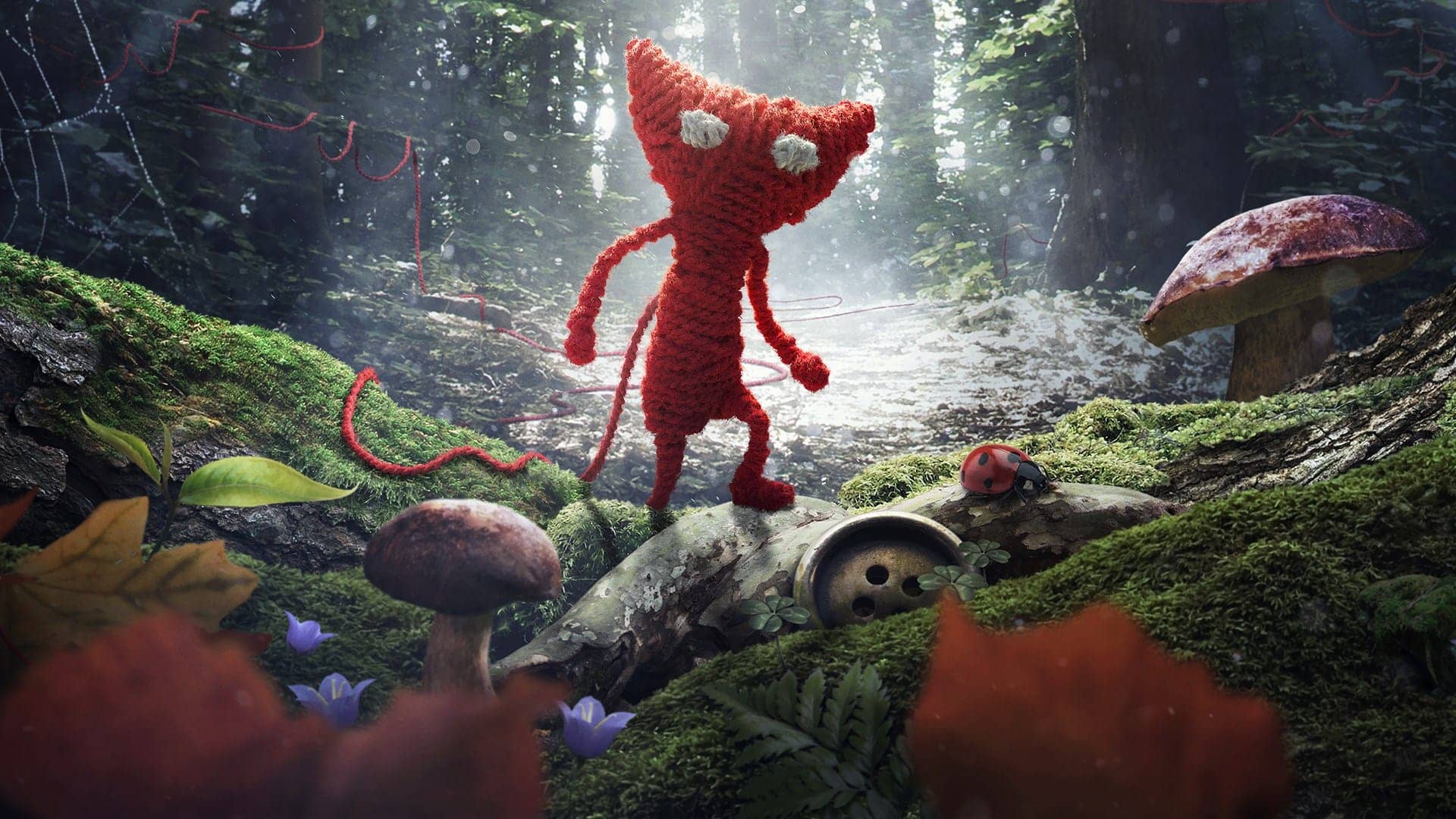We all know the big names of the PlayStation 1 era. The Final Fantasy series, Gran Turismo, and Tekken—they’re the titans that defined a generation. But as a connoisseur of classic games, you and I know that the real treasure lies beneath the surface. For every Crash Bandicoot that sold millions, there’s a wild, inventive, and criminally overlooked game waiting to be discovered.
That’s what this list is all about. This isn’t your standard “greatest hits” compilation. This is your journey into the deepest, most peculiar corners of the PS1 library. From import-only curiosities to bizarre Western releases, they all share a spark of creativity that makes them worth tracking down and experiencing today.
So, let’s get into it. Prepare to have your mind blown, your nostalgia triggered, and your “to-play” list grow by leaps and bounds.
Mega Man Legends
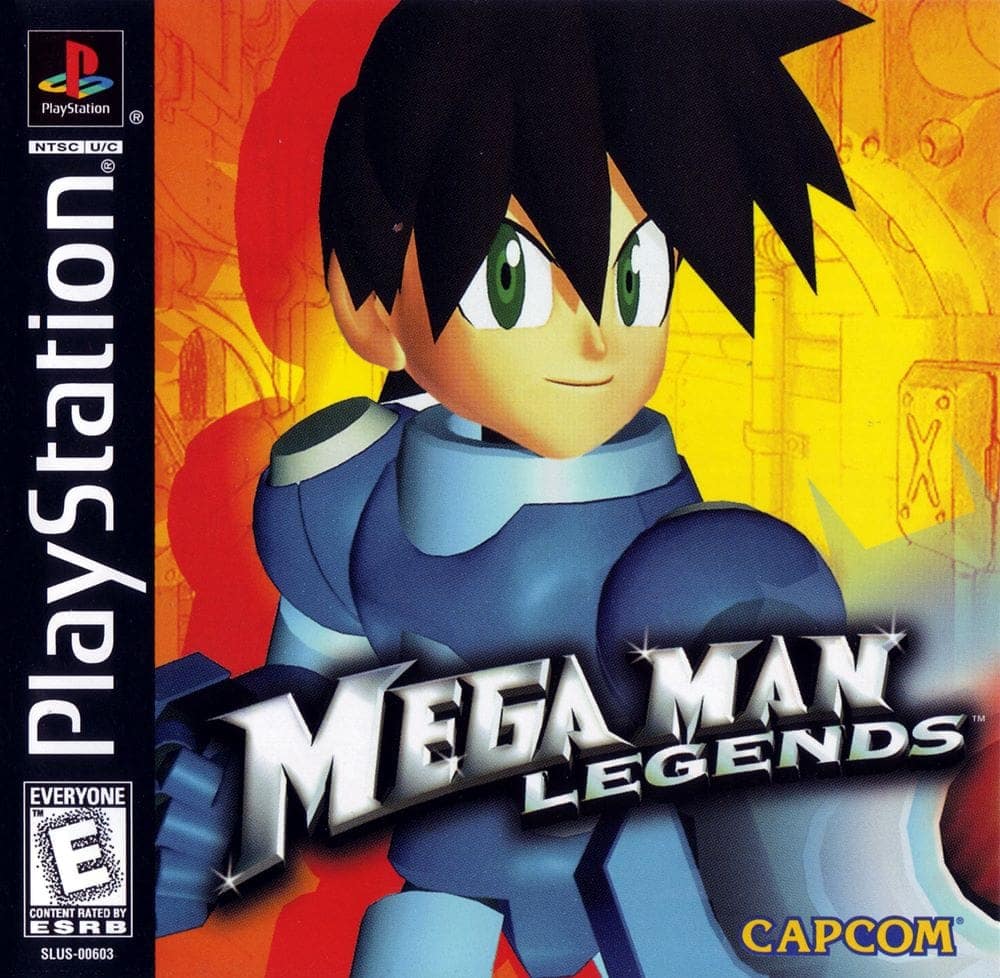
- Developer: Capcom
- Release Date: December 18, 1997
- Genre: Action-adventure, Third-Person Shooter
When Capcom decided to take their beloved Blue Bomber into 3D, few could have predicted just how drastically Mega Man Legends would reinvent the formula. Gone were the tight 2D stages and linear boss fights—in their place stood a fully explorable island city, sprawling dungeons, and a more narrative-driven adventure. You play as MegaMan Volnutt, a “Digger” scouring ancient ruins for treasure alongside his companions Roll and Data the monkey, all while fending off the mischievous Bonne family of sky pirates. The game oozes personality, from its colorful anime aesthetic to its quirky cast of characters, and the sense of exploration feels remarkably ambitious for the PS1 era.
Why It's Worth Playing: This game is more than just a Mega Man spin-off; it's a genre-defining title in its own right. The controls, while a bit wonky by modern standards, are surprisingly intuitive once you get the hang of them. The game's sense of humor, compelling narrative, and unique blend of exploration and combat make it a standout title on the PS1. It's an adventure that's both retro and modern, and it's a perfect example of how to reinvent a classic franchise. It's a true masterpiece.
Tobal No. 9
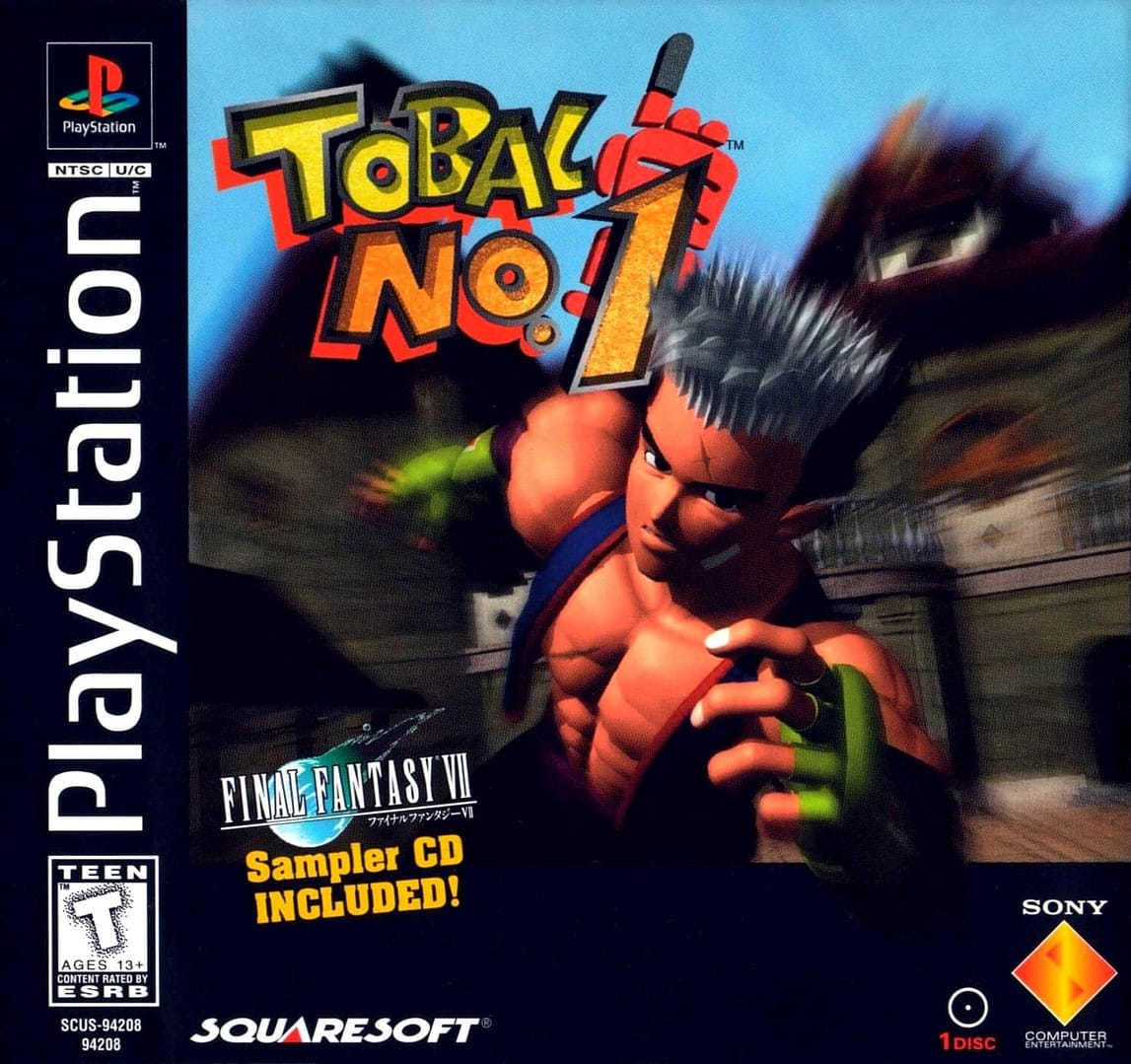
- Developer: DreamFactory
- Release Date: December 20, 1996
- Genre: Fighting
Picture this: Squaresoft, the JRPG legends, asked DreamFactory to make a fighting game. And they get Akira Toriyama, the legendary artist behind Dragon Ball, to design the characters. The result is Tobal No. 9, a game that, frankly, didn’t get nearly enough love. It’s a fighting game with a difference. You can move freely in a fully 3D arena, you have a unique grappling system, and, best of all, it has a full-fledged Quest Mode that plays like an action RPG. This mode is a game in itself, with dungeons, enemies, and loot.
Why It's Worth Playing: The fighting system is deceptively simple but has a lot of depth, and the free-roaming 3D arena adds a new layer of strategy. But it's the Quest Mode that makes this a must-play. It's an inventive and well-developed RPG that's an absolute joy to play. It's a game that shows what happens when a developer isn't afraid to break the mold and create something truly unique.
Grind Session
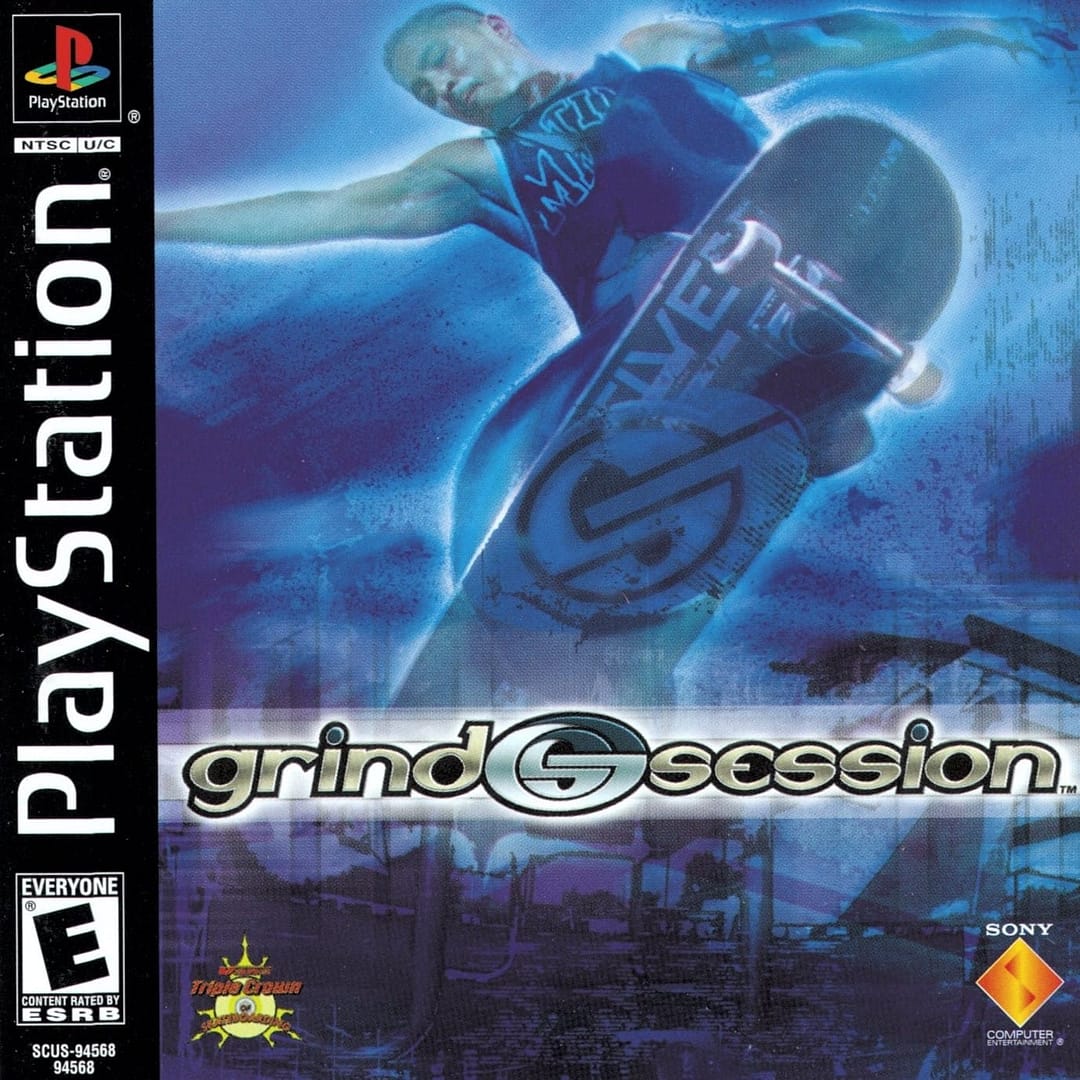
- Developer: Shaba Games
- Release Date: May 25, 2000
- Genre: Sports
The PlayStation era was dominated by Tony Hawk’s Pro Skater, but lurking in its shadow was a scrappy rival that wore its underground roots proudly. Grind Session was a skateboarding game that, frankly, felt more like a street skater’s dream than a video game. The levels were larger and more realistic, and the physics were grounded, requiring you to actually think about your lines and momentum. It had a grittier, more authentic vibe, from the soundtrack to the character designs. The trick system was heavy, the bails were brutal, and the soundtrack carried that jagged edge of authenticity.
Why It's Worth Playing: This game is for the skaters who wanted something more than just arcade-style combos. The trick system is surprisingly deep and rewarding, and the larger, more open levels encourage exploration and creativity. It's a game that was unfairly overshadowed, but it truly stood on its own as a fantastic title. For real, if you're a fan of the genre and want to see how it could have evolved in a different direction, give Grind Session a go. It's a total vibe.
Brave Fencer Musashi

- Developer: Square
- Release Date: October 31, 1998
- Genre: Action RPG
Alright, let’s talk about Square. You know them for JRPGs, right? The sprawling epics with turn-based combat and hours of emotional storytelling. But in 1998, they decided to do something completely different. They gave us Brave Fencer Musashi, a vibrant, action-packed RPG that feels like a forgotten Legend of Zelda competitor. You play as Musashi, a pint-sized hero summoned from another world to save a kingdom. The game has a unique art style, a fantastic sense of humor, and a surprisingly deep combat system that lets you steal your enemies’ abilities.
Why It’s Worth Playing: Brave Fencer Musashi is an absolute delight. It’s got all the charm of a classic Square RPG, but with a fast-paced, real-time combat system that keeps you on your toes. The world is colorful and a joy to explore, and the ability to “assimilate” your enemies’ powers and use them for yourself is a brilliant mechanic. It’s a game that was tragically overshadowed by Square’s bigger titles, but it’s a masterpiece in its own right. It’s a perfect example of a developer stepping outside their comfort zone and knocking it out of the park.
Sled Storm
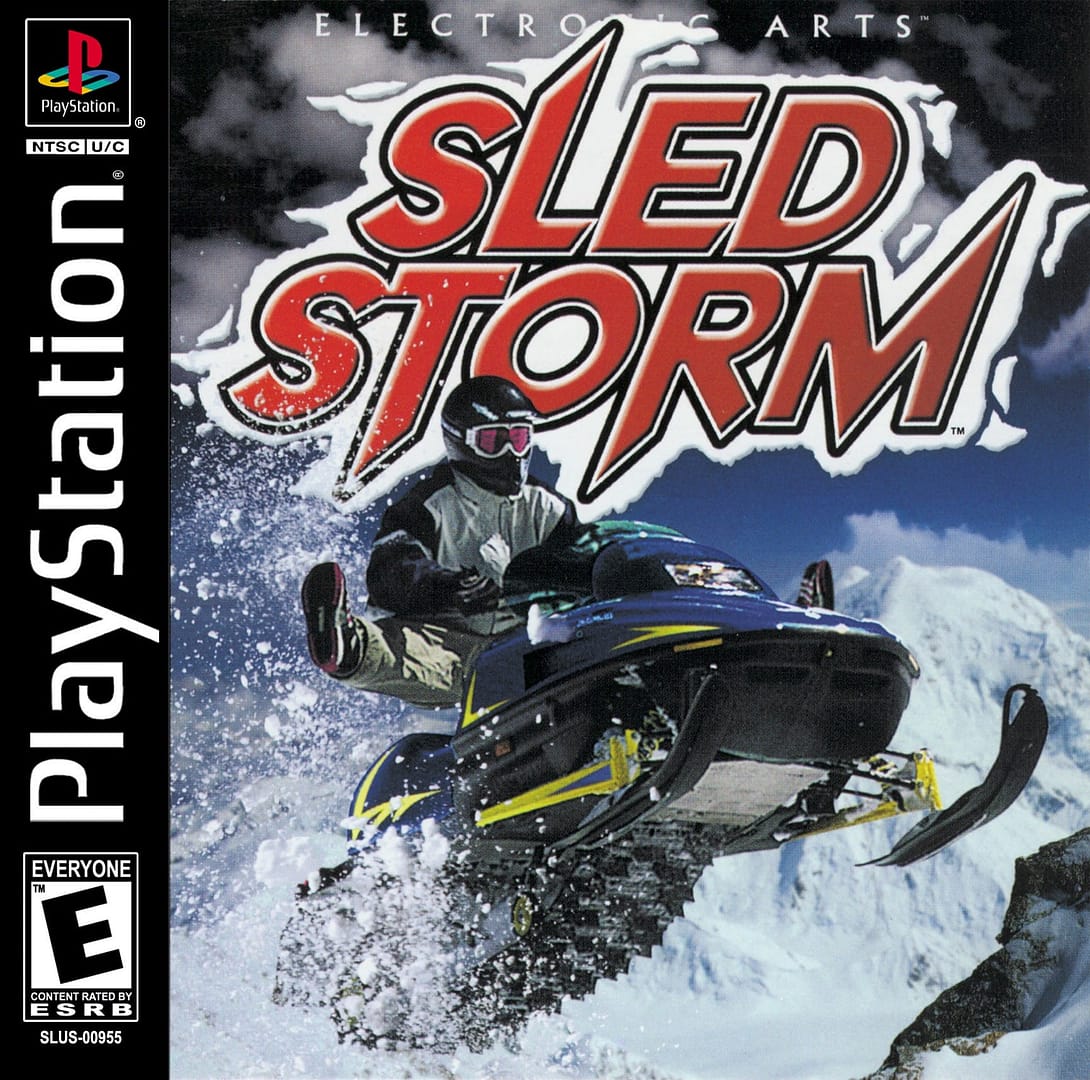
- Developer: Electronic Arts
- Release Date: August 31, 1999
- Genre: Racing
I’ve got a question for you. When you think of a PS1 racing game, what’s the first thing that comes to mind? Cars? Bikes? What about snowmobiles? If you answered yes to that last one, then you probably remember Sled Storm. From the creators of SSX, this is a high-speed, arcade-style racer that’s all about big air, huge jumps, and tricky stunts. The controls are incredibly tight, and the sense of speed is exhilarating. It’s a great example of a PS1 sports game that still holds up today.
Why It's Worth Playing: The game's sense of speed is its greatest strength. The feeling of flying through the air after a huge jump is incredibly satisfying, and the game’s trick system is surprisingly deep. It’s a great example of a developer taking a simple concept and executing it to perfection. It's a game that is all about pure, unadulterated fun, and it's a must-play for any fan of arcade racers.
Ehrgeiz: God Bless the Ring
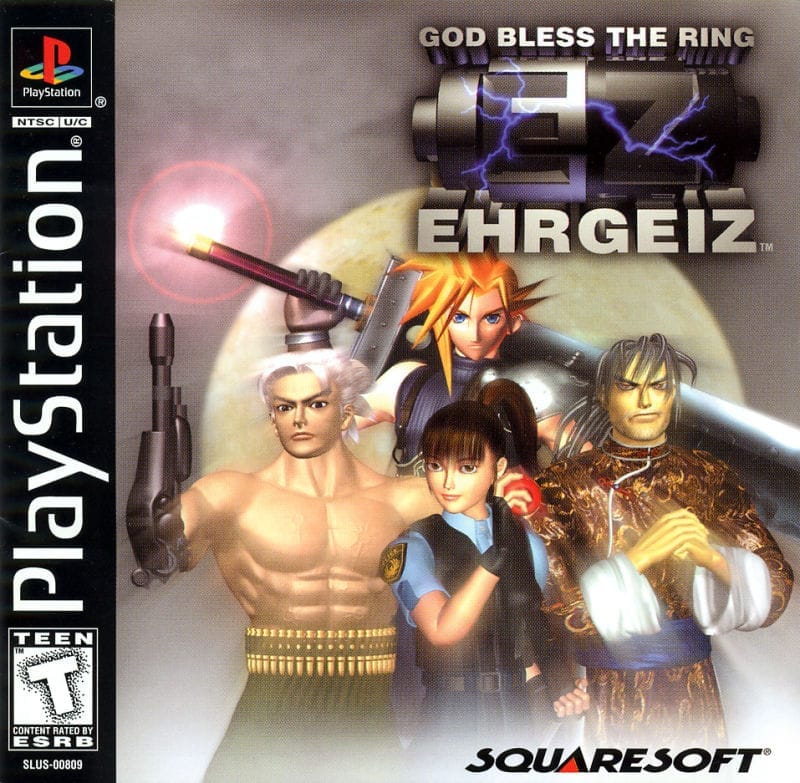
- Developer: DreamFactory
- Release Date: December 17, 1998
- Genre: Fighting
Ehrgeiz: God Bless the Ring isn’t just another 3D fighter—it’s a genre mashup that dared to be different. On the surface, it looks like a brawler in the Tekken mold (not surprising, since DreamFactory worked on Tobal and Tekken). But dig deeper and you’ll find an entire dungeon-crawling RPG mode tucked inside, complete with loot, leveling, and labyrinthine dungeons to explore. As if that wasn’t enough to turn heads, Square sprinkled in some Final Fantasy VII magic: yes, you can square off as Cloud, Tifa, Sephiroth, and more. The result is a fighter that feels experimental, unpolished in spots, but endlessly fascinating in its ambition.
Why It’s Worth Playing: Ehrgeiz is remembered less for its fighting mechanics and more for its sheer audacity. It’s a game that throws multiple genres in a blender, tops it with fan service, and somehow makes it work. For fighting game historians and RPG lovers alike, it’s a curio worth revisiting—not to mention one of the rare chances to see Cloud Strife throwing down in a 3D arena outside of Smash Bros. long before crossovers became the norm.
Uprising X
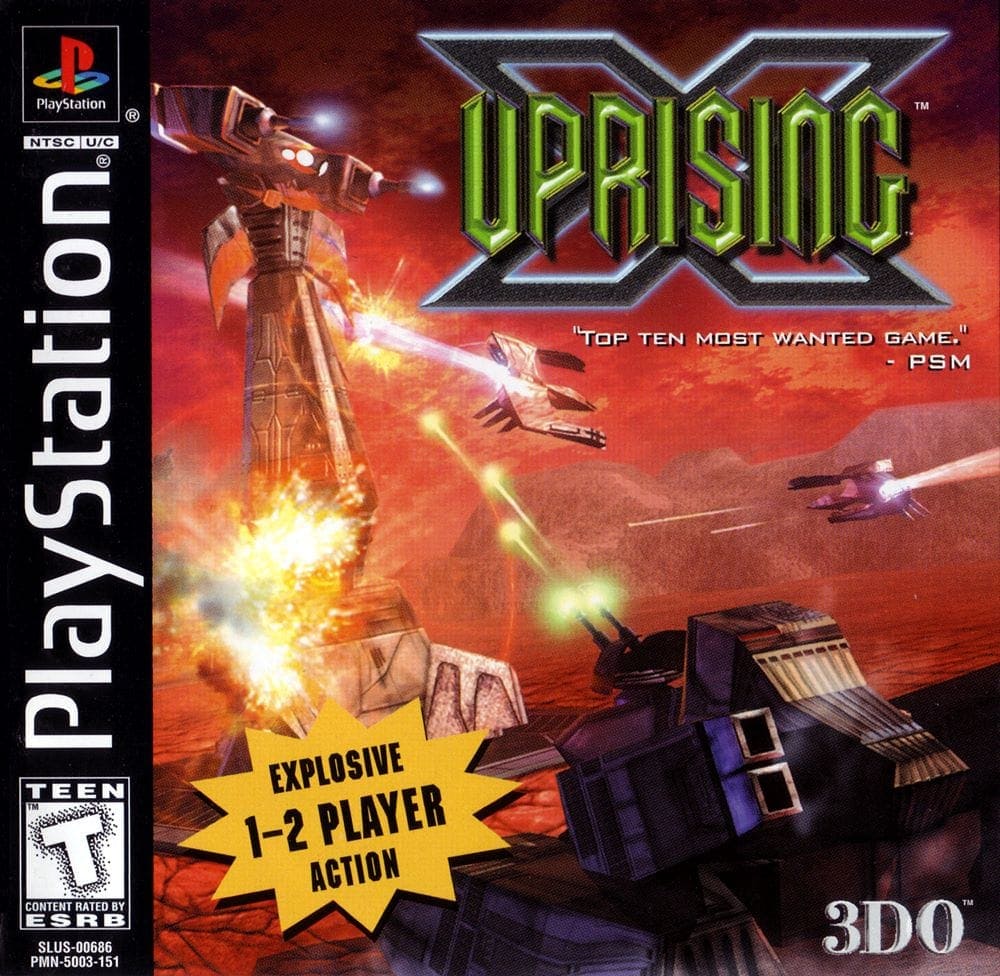
- Developer: Cyclone Studios
- Release Date: December 18, 1998
- Genre: Action, RTS
What do you get when you mix a first-person shooter with a real-time strategy game and wrap it all in a chunky, late-90s sci-fi aesthetic? You get Uprising X, a game that was way ahead of the curve. It hands you the reins of a powerful Wraith combat tank and asks you to be both soldier and commander. At ground level, it plays like a futuristic first-person shooter, with explosive weapons, mech-heavy battles, and enough chaos to scratch that action itch. But layered on top is a tactical twist: you’re also directing units, constructing outposts, and managing resources in real time, all while keeping yourself alive on the battlefield.
Why It's Worth Playing: What makes Uprising X shine is how seamlessly it blends strategy with raw firepower. It demands quick reflexes and sharp tactical thinking, rewarding players who can juggle the chaos of frontline combat with the bigger picture of base-building and resource management. IMO, it's one of the most brilliant and overlooked hybrids of its time.
Overboard! (Shipwreckers!)
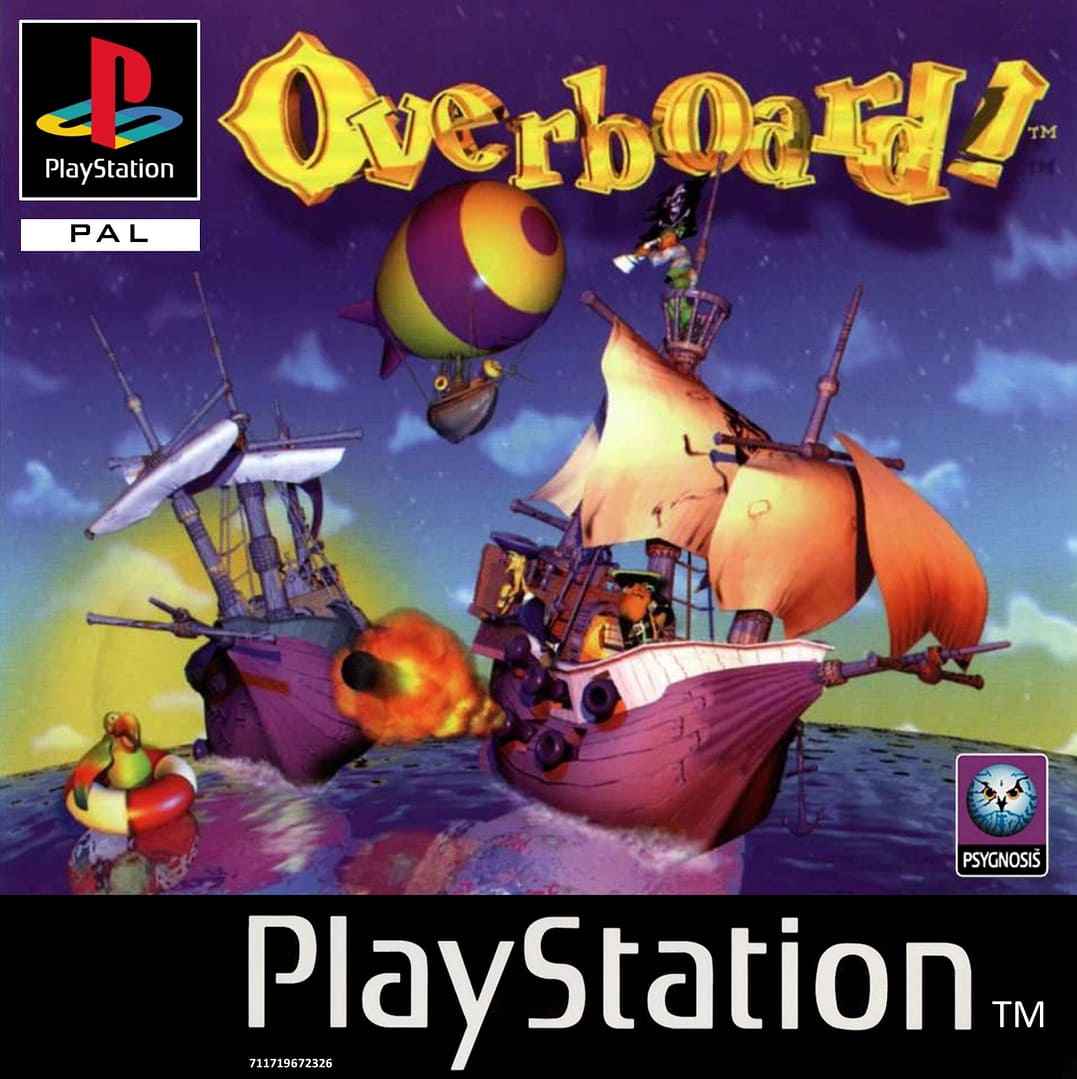
- Developer: Psygnosis
- Release Date: October 24, 1997
- Genre: Adventure
Overboard! (also known as Shipwreckers! in North America) is a top-down naval brawler that, frankly, has no business being this much fun. It’s not about meticulous strategy or realistic physics; it’s about pure, chaotic, power-up-fueled insanity. You pick a pirate ship and set sail on a mission to blow your friends out of the water, and honestly, what’s not to love about that? The game blends fast-paced racing with arcade-style combat, throwing in puzzles and secret routes that keep each level feeling fresh. Its whimsical presentation—cartoonish pirate crews, slapstick explosions, and colorful maps—belies just how frantic and competitive it can get, especially when the cannonballs start flying.
Why It's Worth Playing: Seriously, if you and your buddies are looking for a party game that isn't a kart racer or a mini-game compilation, this is it. The levels are surprisingly intricate, with currents and whirlpools that add a layer of challenge to the mayhem. It's a game that instantly transports you back to the golden age of couch co-op. IMO, there’s a genuine charm to the simplicity of Overboard! that modern multiplayer games often lack. It's pure, unadulterated fun, and that's a rare treasure indeed.
Treasures of the Deep
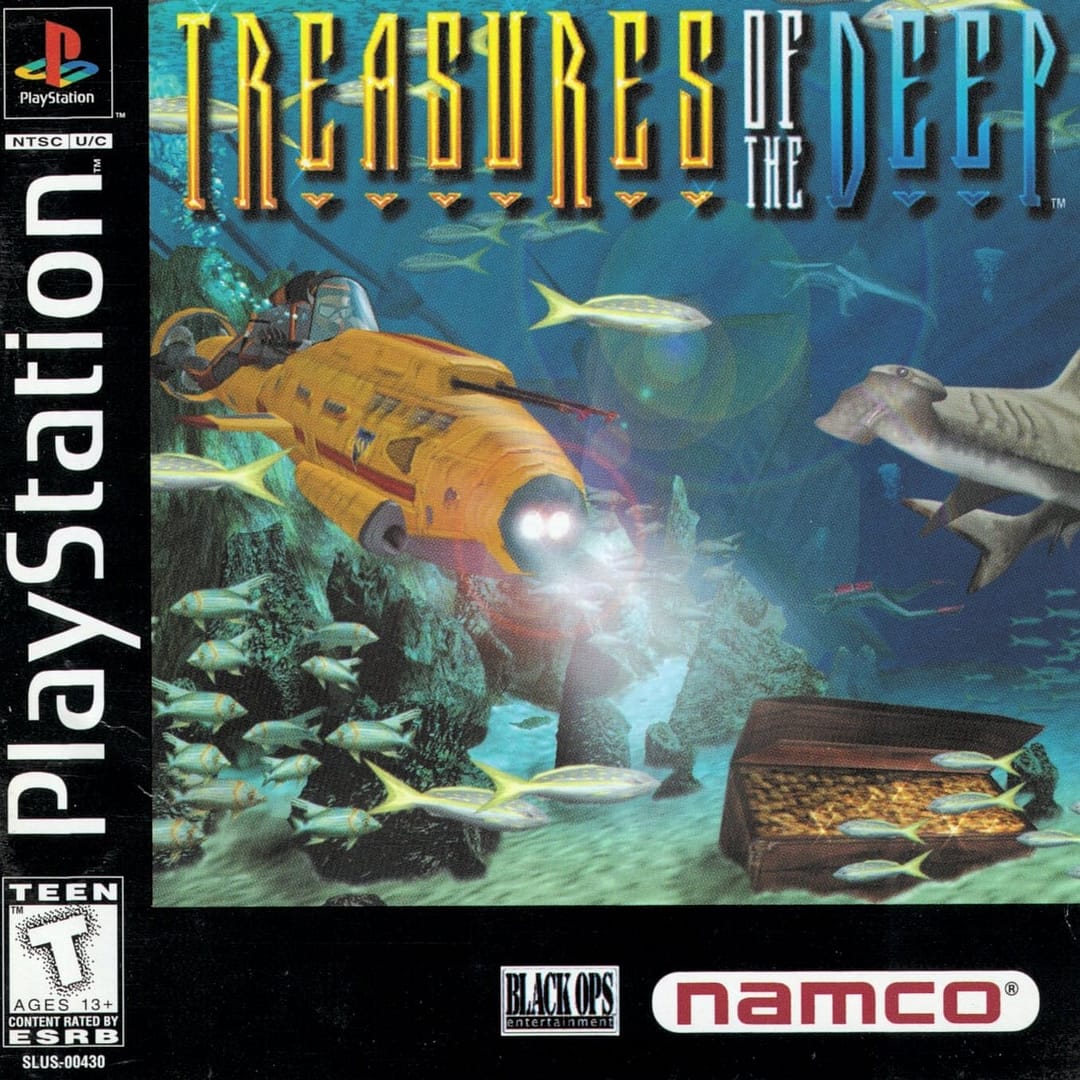
- Developer: Black Ops Entertainment
- Release Date: September 24, 1997
- Genre: Action-adventure
Ever felt the urge to just… disappear? Long before games like Subnautica existed, Treasure of the Deep dared to plunge players into the vast unknown—beneath the ocean’s surface. Instead of another corridor shooter or platformer, it hands you the controls of a heavily armed submersible and drops you into sprawling underwater environments teeming with life, mystery, and lurking danger. One moment you’re weaving through coral reefs in search of sunken treasure, the next you’re in a tense firefight with enemy divers or dodging the gnashing jaws of a great white shark. The game balanced wonder with dread, capturing both the beauty and hostility of the deep sea in a way that felt utterly unique on the PlayStation.
Why It's Worth Playing: In a gaming landscape often dominated by bombast and bravado, Treasure of the Deep dares to be… serene. It’s about the quiet thrill of discovery, the piecing together of forgotten histories from barnacle-encrusted artifacts. The occasional unsettling encounter with denizens of the deep adds a touch of suspense, ensuring you’re never entirely comfortable in your metallic shell. If you yearn for a gaming experience that prioritizes ambiance and exploration over relentless action, this submerged saga is a genuine pearl.
Power Shovel
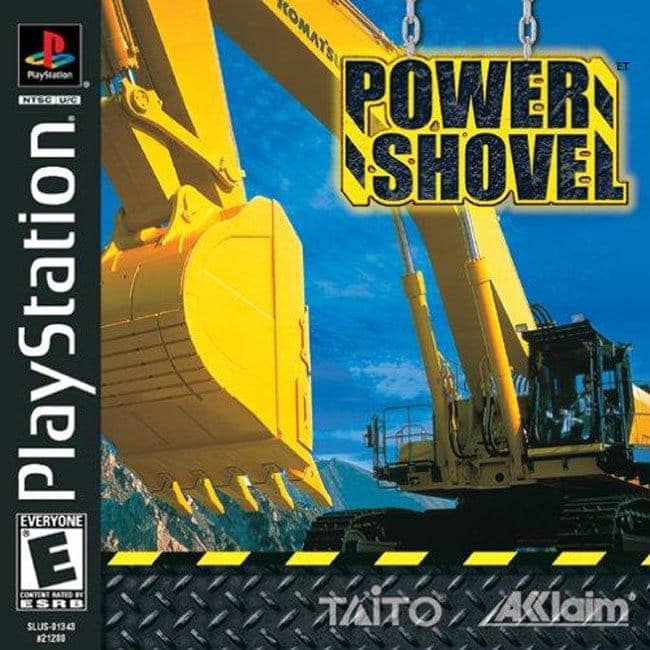
- Developer: Taito
- Release Date: September 21, 2000
- Genre: Simulation, Arcade
Before you roll your eyes, hear me out. Power Shovel is exactly what it sounds like—a game about operating a giant excavator. No explosions, no saving the world, just you and a colossal piece of machinery. Taito, the developers behind arcade classics like Space Invaders, somehow managed to make this concept not just a playable game, but an addictively compelling one. The game’s charm lies in its total commitment to the bit. The controls are complex and mimic a real excavator’s dual-stick setup, forcing you to master a nuanced art. It’s an ode to the blue-collar worker and the satisfaction of a job well done.
Why It's Worth Playing: Power Shovel is the kind of game that could only exist during the weird, wonderful heyday of the PS1. It's a testament to the creativity of Japanese developers who took an absurd premise and turned it into a surprisingly deep and rewarding experience. The satisfaction of perfectly scooping up a pile of dirt and dumping it with precision is a simple pleasure, but it's a powerful one. If you're looking for a game that's truly off the beaten path and gives you a new appreciation for the mundane, Power Shovel is a gold mine. Pun intended.
Community Pom
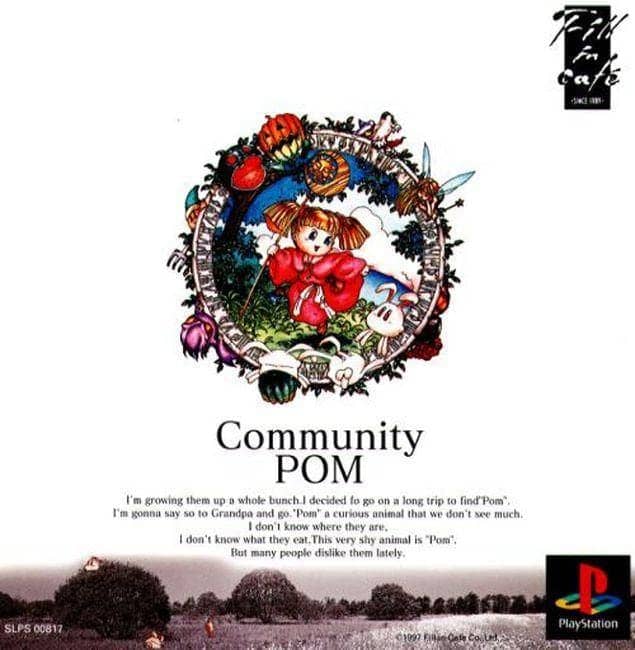
- Developer: Fill-In Café
- Release Date: October 30, 1997
- Genre: Action RPG
Don’t let the saccharine-sweet visuals fool you; Community Pom is a surprisingly deep and rewarding action RPG. You play as a young girl named Lulu, tasked with saving adorable little creatures called Poms from a mysterious evil. But here’s the twist: it’s not just a dungeon crawler. The game is a unique hybrid, blending classic Zelda-style combat and exploration with a sophisticated town-building and pet-raising system. You care for your Poms, and in return, they help you on your quest. It’s an absolutely charming experience that never made it out of Japan, which is a real shame.
Why It's Worth Playing: The game's art style is gorgeous and timeless, a perfect marriage of cute and functional. The gameplay loop of exploring dungeons, rescuing Poms, and then seeing them thrive in your village is incredibly satisfying. It’s a testament to the fact that you don't need gritty realism to make a compelling game. This is a game with a huge heart and a ton of depth, and it's a perfect example of a truly hidden gem that deserves to be played (An English translation patch is available online).
The Adventures of Lomax
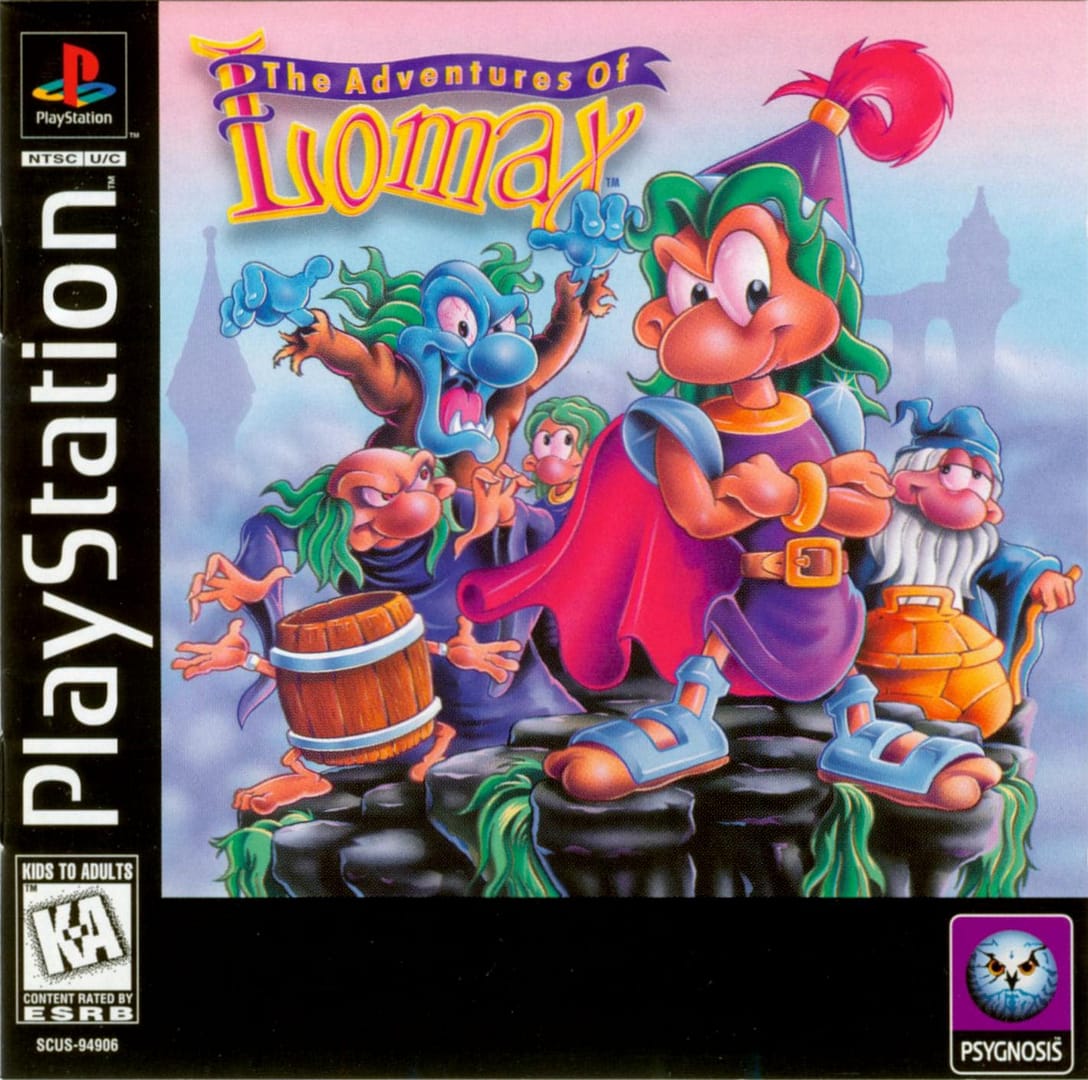
- Developer: Psygnosis
- Release Date: October 31, 1996
- Genre: Platformer
If you were a fan of Lemmings back in the day, you have to check this out. The Adventures of Lomax is a spin-off of the classic puzzle series, but it’s a full-fledged 2D platformer with a beautiful, hand-drawn art style. You play as Lomax, a cute little Lemming hero who has to save his friends from a wicked villain. The game is incredibly charming, with fluid animation and some of the most beautiful 2D art on the system. It’s a game that feels like a playable cartoon.
Why It's Worth Playing: The game's art style is its greatest strength. It's a beautiful, hand-drawn platformer that feels like a forgotten classic from the 16-bit era. The gameplay is tight and responsive, and the game has a great sense of humor. It's a perfect example of a developer taking a chance on a new idea, and it's a must-play for any fan of 2D platformers or beautiful art.
No One Can Stop Mr. Domino!
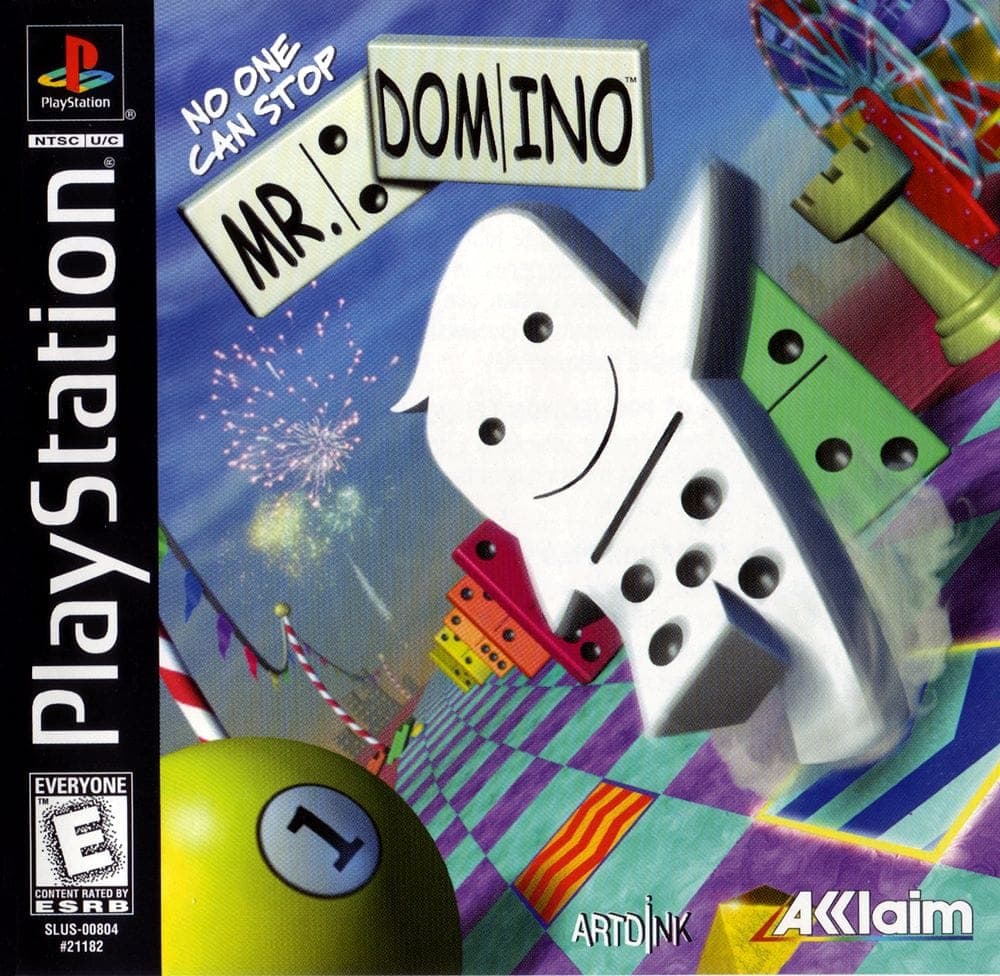
- Developer: Artdink
- Release Date: January 8, 1998
- Genre: Puzzle
Welcome to one of the most delightfully bizarre games ever to grace the PS1. No One Can Stop Mr. Domino! is a rhythm-action puzzle hybrid starring a little domino-man who must run along a course and strategically place dominoes to create epic chain reactions. It’s a fever dream of a game, with levels that twist and turn through surreal, dreamlike environments. The game’s strange aesthetic, combined with its simple-but-addictive gameplay, makes it an unforgettable experience.
Why It's Worth Playing: No One Can Stop Mr. Domino! is 100% pure, uncut weirdness, and that's its greatest strength. It’s the kind of inventive, quirky title that defined a certain era of Japanese game design. The rhythmic gameplay is deceptively simple, but mastering the timing to set off a flawless chain reaction is incredibly satisfying. If you're tired of conventional genres and want to see just how creative game design can be, you've got to give this a shot. It's a one-of-a-kind trip.
Gundam: Battle Assault 2
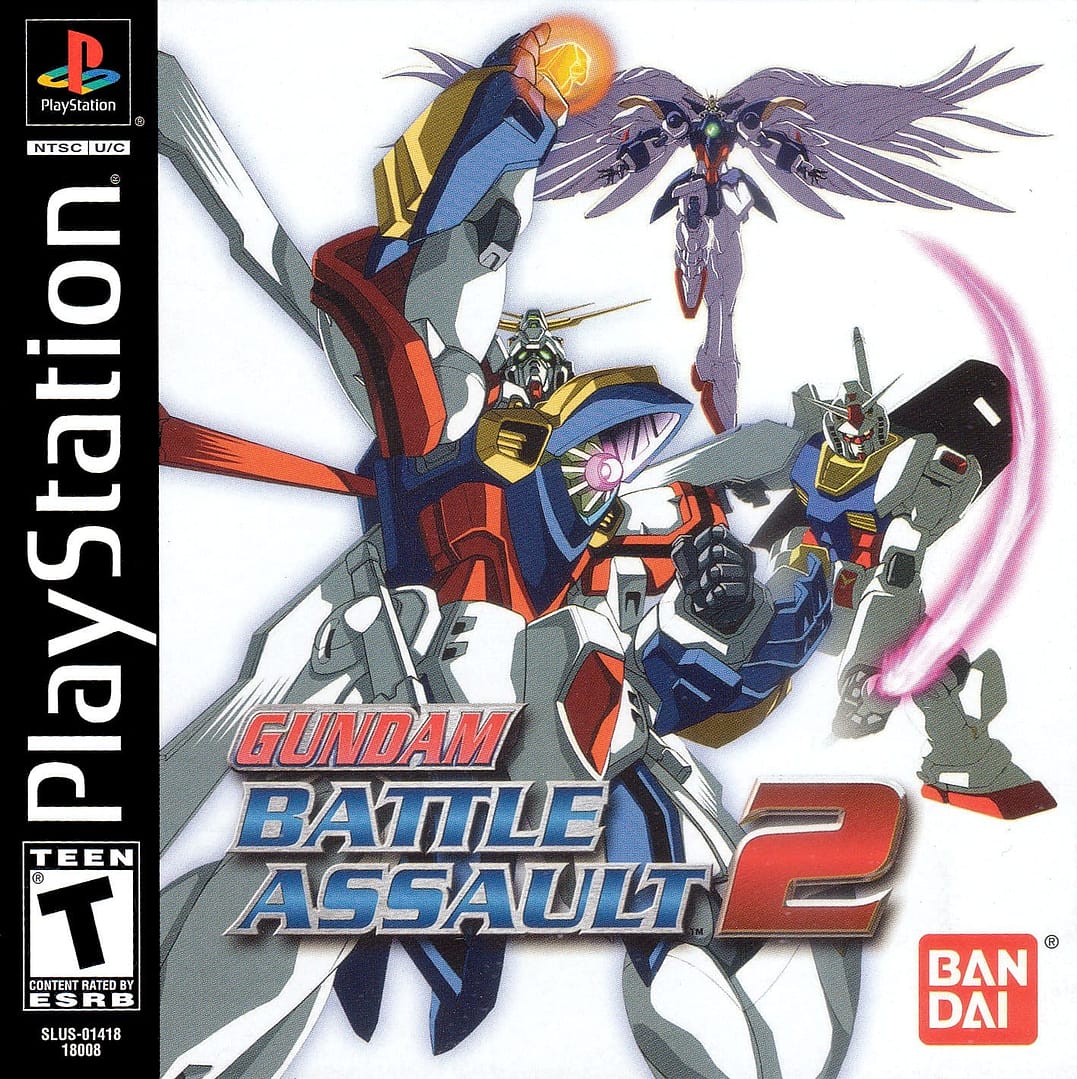
- Developer: Natsume
- Release Date: July 18, 2002
- Genre: Fighting
When it comes to anime fighters on the PlayStation, few strike the balance between spectacle and substance quite like Gundam: Battle Assault 2. This was no lazy cash-in; it was a love letter to the Gundam franchise, packing in over 30 Mobile Suits drawn from across the series’ sprawling timeline. From the iconic Wing Gundam Zero to deep-cut fan favorites, the roster gave players plenty of mechanical muscle to master. Battles unfold with weighty animations, crisp 2D sprites, and explosive beam-saber clashes that feel every bit as dramatic as the anime’s space duels. Each suit has its own quirks, from ranged laser barrages to close-quarters melee assaults, ensuring that every match felt distinct and fiercely competitive.
Why It's Worth Playing: Battle Assault 2 is a deep, technical fighting game masquerading as anime fan service. The controls are tight, and the combat has a surprising amount of depth, with special attacks, beam saber clashes, and high-flying combos. It’s a love letter to Gundam fans, yes, but it's also a genuinely excellent fighting game that more people should have played. If you’ve ever wanted to pit the Epyon against the God Gundam, this is your chance, and it’s a glorious one.
Ghost in the Shell
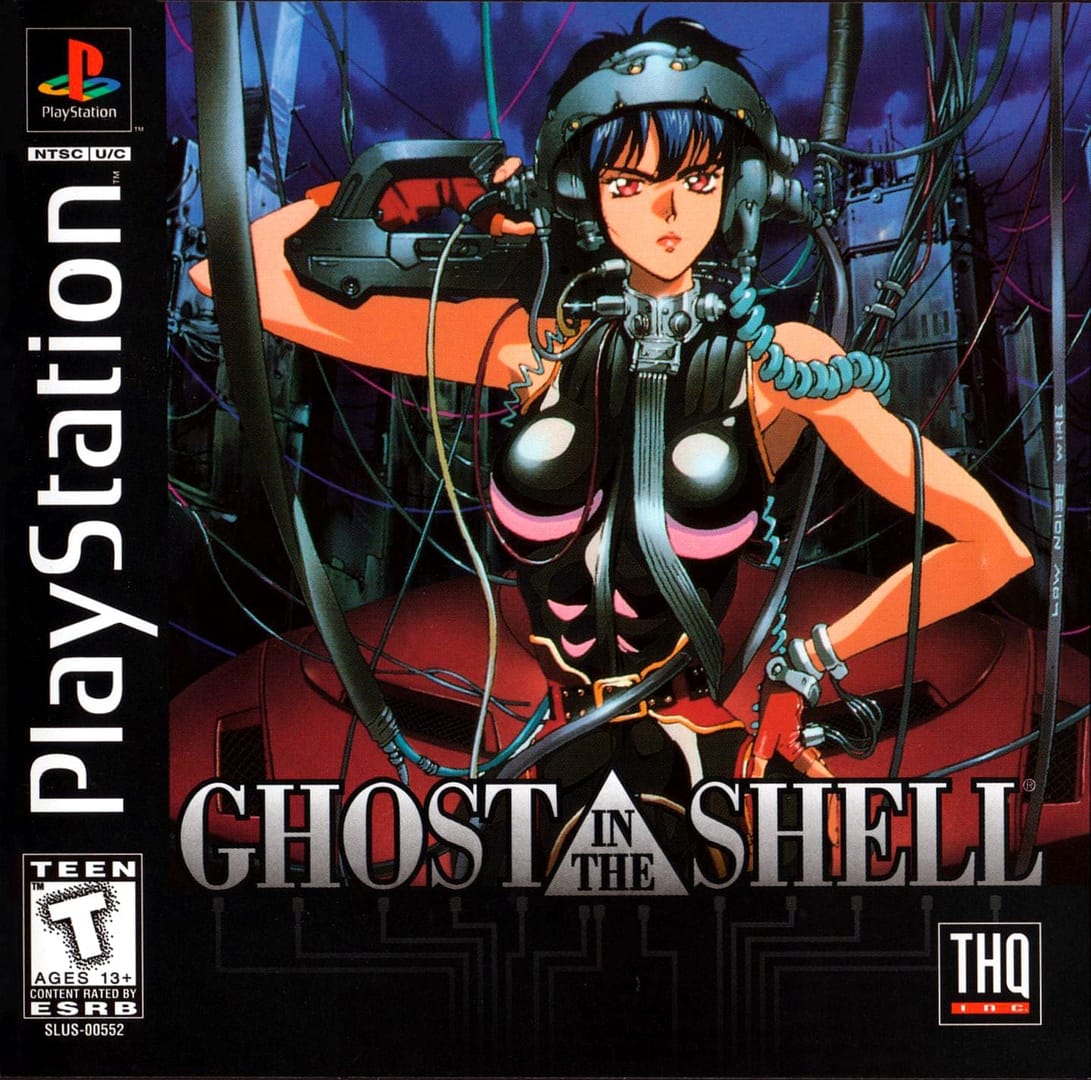
- Developer: Exact
- Release Date: July 17, 1997
- Genre: Action, Third-Person Shooter
Instead of trying to replicate the philosophical depth of Masamune Shirow’s manga or Mamoru Oshii’s iconic film, Ghost in the Shell zeroes in on what makes the franchise instantly cool—sleek mechs, neon-soaked cyberpunk backdrops, and stylish gunfights. You pilot a Fuchikoma, the spider-like tank, and navigate incredible, multi-tiered levels. But the key mechanic? You can climb on walls and ceilings! The game’s 3D engine allows for a seamless transition from floor to wall, creating a sense of freedom and verticality that was completely unheard of back then.
Why It's Worth Playing: With its fluid controls, inventive level design, and Production I.G’s animated cutscenes tying the story together, Ghost in the Shell stands as one of the most authentic anime-to-game adaptations ever made. It doesn’t just borrow the license—it amplifies it, delivering a fast, stylish action experience that still feels fresh today. For fans of cyberpunk aesthetics and anyone itching for a mech game with flair, this is one PS1 hidden gem that refuses to fade into the shadows.
Gear Fighter Dendoh
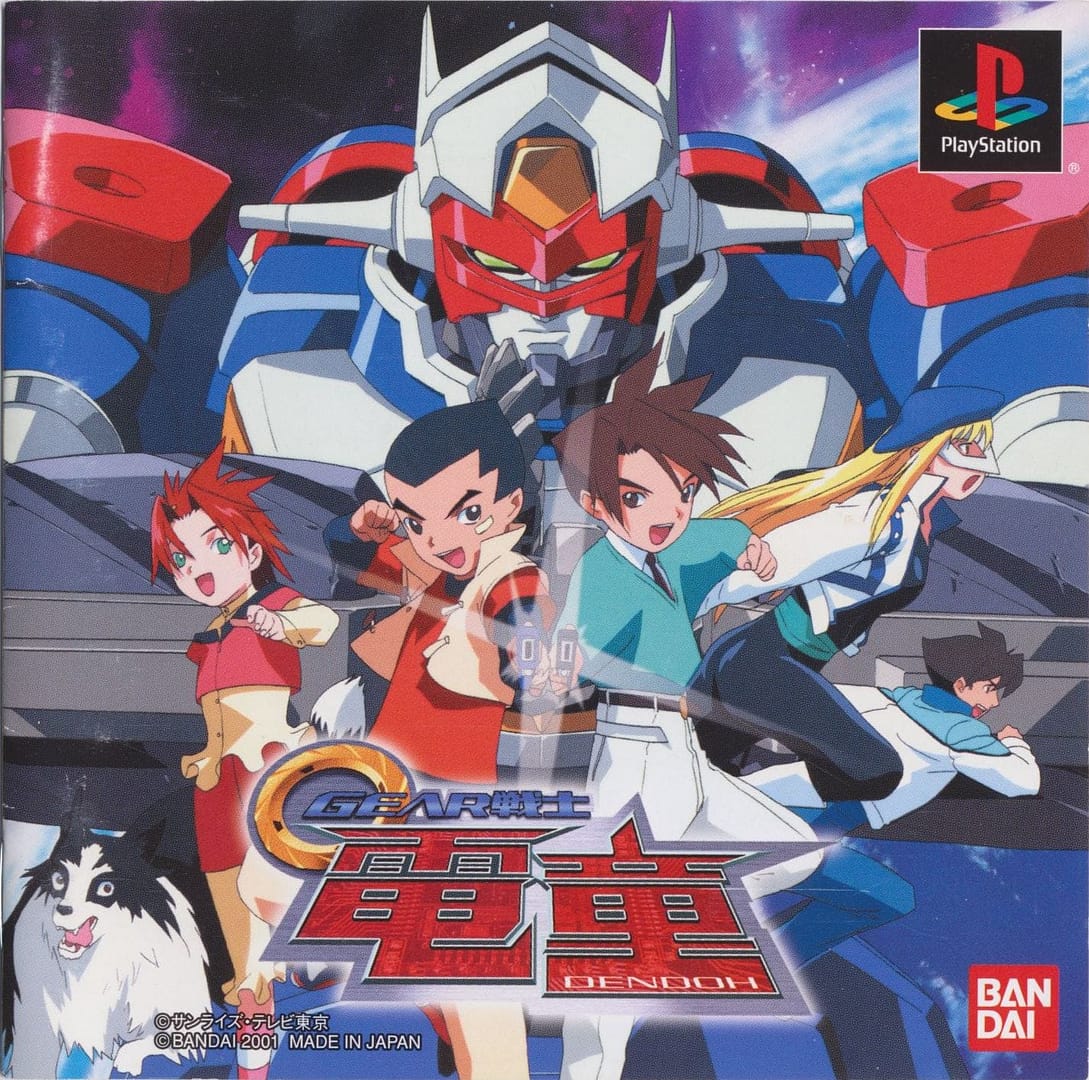
- Developer: Bandai
- Release Date: November 22, 2001
- Genre: Action, Beat ’em Up
Ready for another mech-based beat ’em up? Because this one is a visual feast. Gear Fighter Dendoh is a 2D fighter based on a cult-favorite anime, and it’s a technical marvel. The sprites are enormous, the animations are fluid and explosive, and the game does a fantastic job of capturing the over-the-top action of the source material. It’s not the most complex fighter out there, but its sheer sense of scale and spectacle makes it an absolute joy to play.
Why It's Worth Playing: If you're a fan of anime fighters and want something more obscure than Dragon Ball Z, this is your jam. The combat is fast and frenetic, and the special moves are pure eye candy. It's a game that could only exist on the PS1, with its 2D graphical prowess, and it's a perfect example of a developer hitting all the right notes for its target audience. It's a game that feels like a playable cartoon.
Dr. Slump
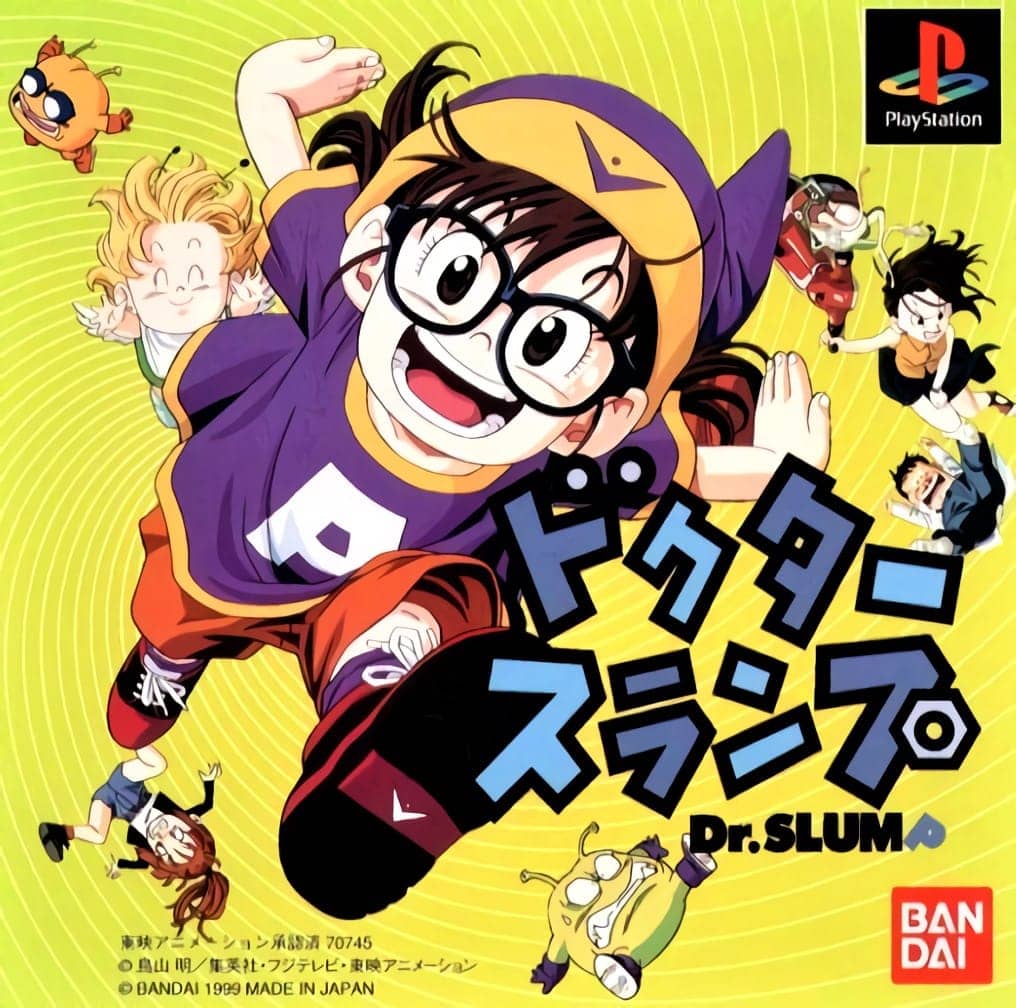
- Developer: Bandai
- Release Date: March 18, 1999
- Genre: Platformer
Before Dragon Ball took over the world, Akira Toriyama’s other big creation was Dr. Slump, a charming, comedic manga about a robot girl named Arale. This PS1 game is a pitch-perfect adaptation. It’s a 3D platformer that looks and feels exactly like a playable cartoon. The low-poly aesthetic perfectly captures the manga’s whimsical art style, and the game is bursting with slapstick humor and inventive level design. It’s a short but incredibly sweet experience.
Why It's Worth Playing: Dr. Slump is a breath of fresh air. It’s simple, lighthearted, and just plain fun. The characters are as endearing as they are in the manga, and the levels are filled with creative little puzzles and collectibles. If you're looking for a game that’s wholesome, charming, and genuinely funny, you have to track this one down. It's a delightful throwback to a simpler time in gaming.
Spriggan: Lunar Verse
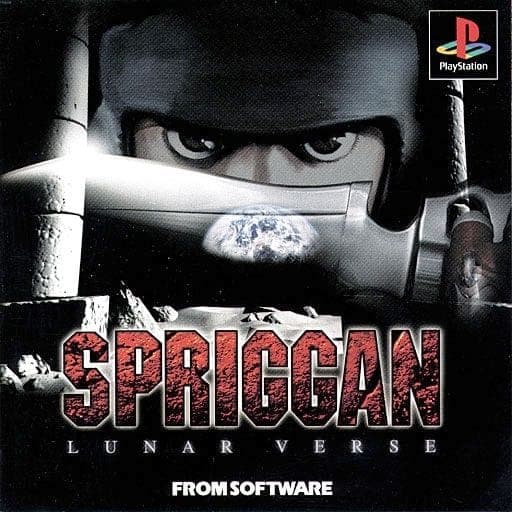
- Developer: FromSoftware
- Release Date: June 17, 1999
- Genre: Action-adventure
Before FromSoftware was known for punishing soulslike epics, they were quietly experimenting with all sorts of oddities on the PlayStation. Spriggan: Lunar Verse is one such gem—a cyberpunk action game based on the Spriggan manga and anime. It drops you into a near-future world dripping with neon, conspiracies, and shadowy organizations, arming you with blades and fists to cut through swarms of cybernetic enemies. The hack-and-slash combat is fast and flashy, leaning heavily on stylish combos and cinematic flair. Between missions, animated cutscenes flesh out a story of espionage and supernatural power struggles that feels straight out of a late-night anime marathon.
Why It's Worth Playing: Spriggan: Lunar Verse is all about atmosphere and spectacle. It has a fantastic art direction, a killer soundtrack, and some of the most impressive set pieces on the PS1. It's a game that shows FromSoftware's chops were already on point, even in a completely different genre. If you're a fan of rail shooters and want to see a developer at the top of their game, you have to find this one. It's a true hidden gem from a legendary studio.
Cosmo Warrior Zero
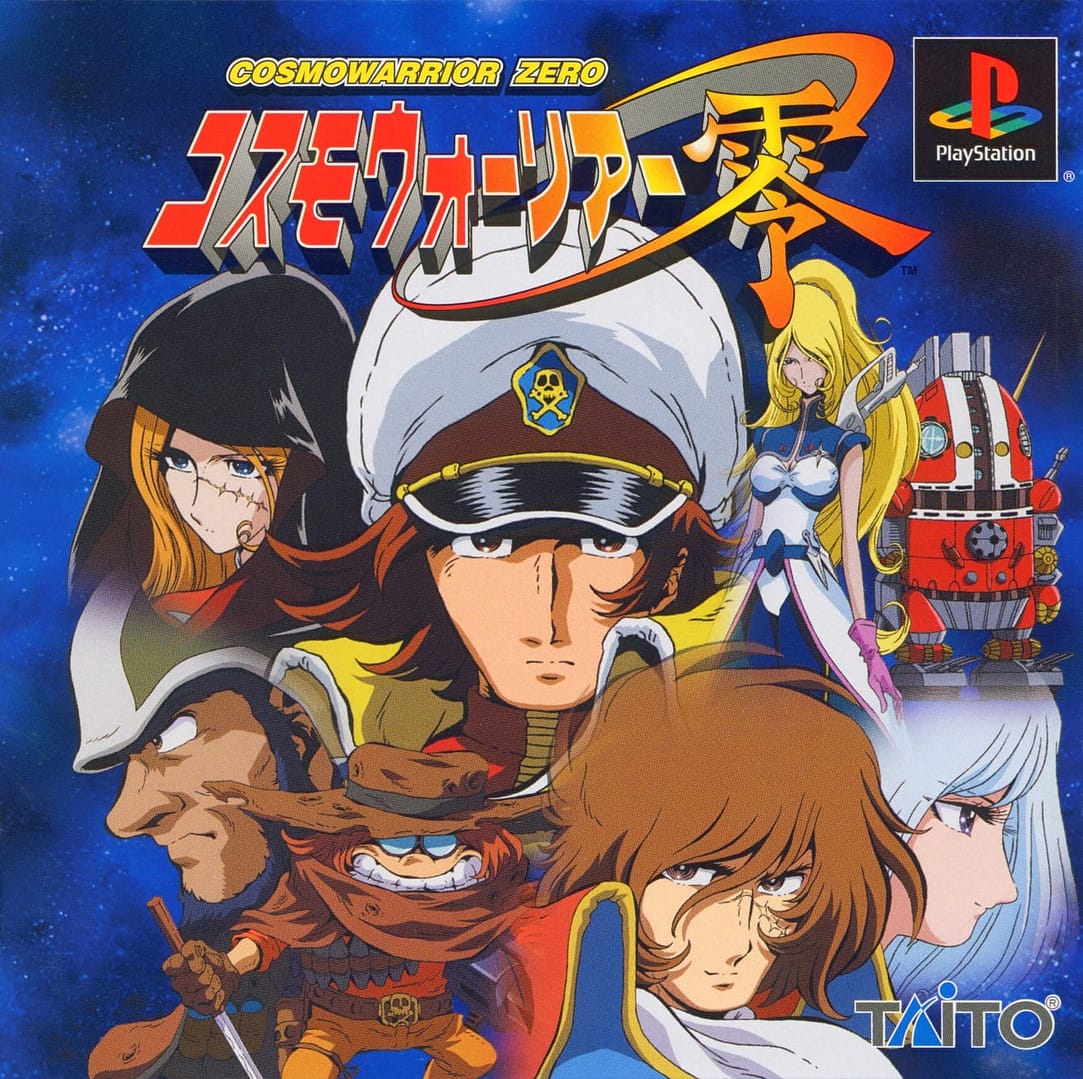
- Developer: Taito
- Release Date: October 26, 2000
- Genre: Third-Person Shooter
Leiji Matsumoto, the legendary mind behind Space Battleship Yamato and Captain Harlock, brought his signature mix of melancholy, heroism, and star-sailing spectacle to the PlayStation with Cosmo Warrior Zero. This anime-inspired shoot ’em up wraps its arcade action in a sweeping space opera narrative, complete with Matsumoto’s trademark steampunk starships and noble outlaws drifting among the stars. You take command of Zero, a space captain torn between duty and ideals, as you blast through beautifully drawn stages teeming with enemy fleets. It’s not just about dodging bullets and firing back—it’s about inhabiting that larger-than-life Matsumoto universe, where every battle feels like it has cosmic weight.
Why It's Worth Playing: Cosmo Warrior Zero is a work of art. The developers at Taito went out of their way to capture the look and feel of a classic anime, and it shows. The story is rich and engaging, and the game’s somber, reflective tone sets it apart from other action-oriented sci-fi titles. It's an unforgettable experience for any fan of classic anime or anyone who appreciates a unique and artistic approach to game design. It’s a perfect example of a game that’s about more than just its mechanics.
Remote Control Dandy
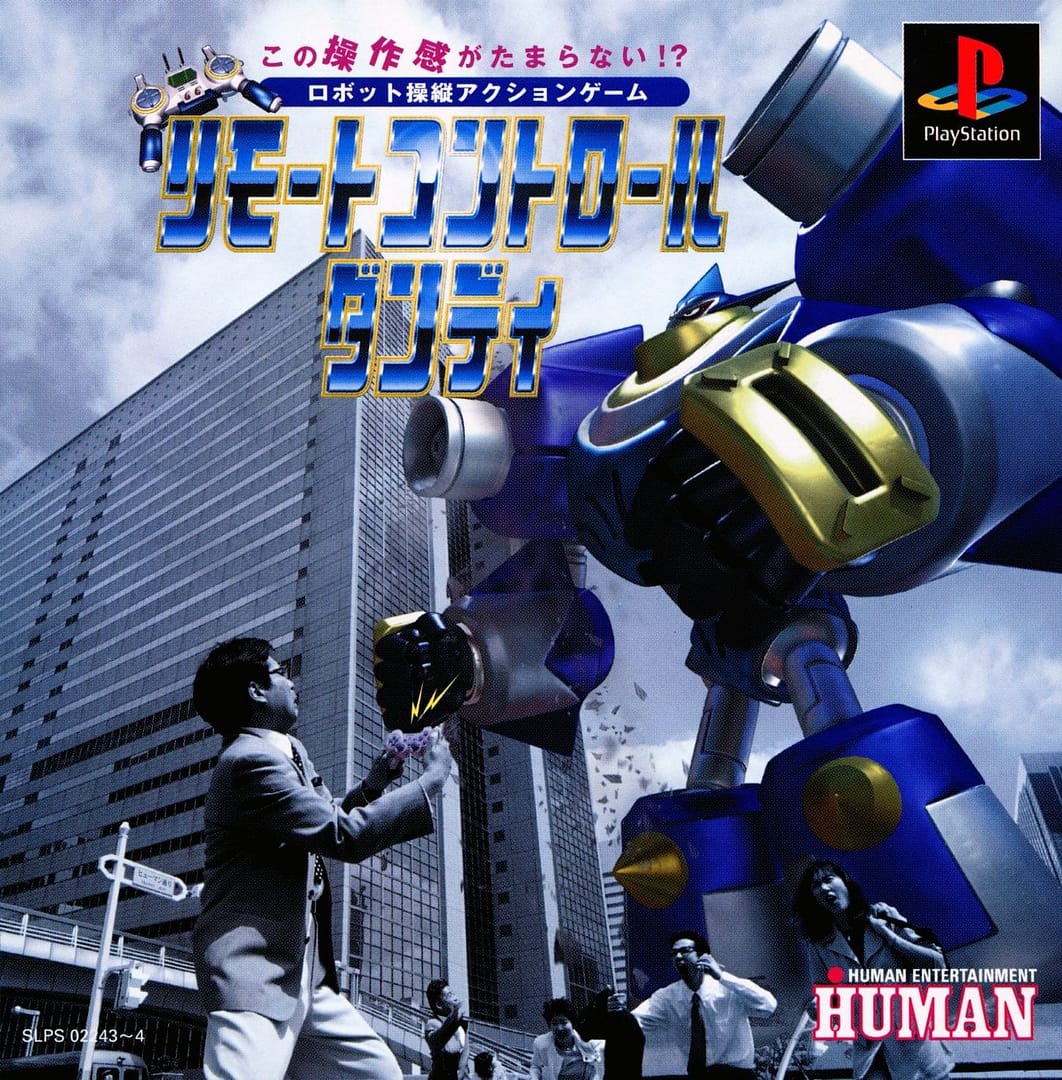
- Developer: Human Entertainment
- Release Date: July 22, 1999
- Genre: Action, Simulation
This is one of the most niche and fascinating titles on this entire list. Remote Control Dandy is a game that takes the classic giant robot genre and turns it on its head. Instead of directly controlling your massive mech, you play as a kid on the ground, using a remote control to issue commands. You have to manage your distance from the robot, your view of the battlefield, and the flow of combat all at the same time. It’s a game that is all about thinking tactically, not just mashing buttons. The kaiju-style battles and city-smashing action are a pure joy to watch.
Why It's Worth Playing: The control scheme is incredibly unique and challenging, but once it clicks, it's a deeply rewarding experience. The game’s sense of scale is fantastic, and the feeling of commanding a massive robot from the ground level is unlike anything else on the PS1. It's a game that is a testament to the creativity of Japanese developers during this era, and it's a must-play for any fan of giant robots or quirky, inventive gameplay.
Mad Stalker: Full Metal Force
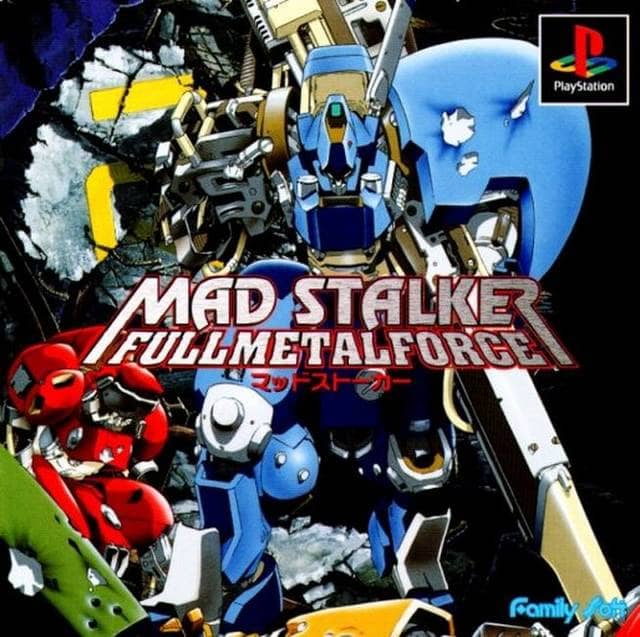
- Developer: Family Soft
- Release Date: July 3, 1997
- Genre: Beat ’em Up
Mad Stalker: Full Metal Force brings classic arcade brawling into a sleek cyberpunk shell. Originally a cult hit on home computers and consoles like the PC Engine, the PlayStation port amps things up with sharp visuals and fluid mecha-on-mecha combat. The game drops you into a neon-soaked future where towering robots duke it out in side-scrolling stages, blending fast-paced fighting mechanics with beat ’em up progression. Each mech comes with its own arsenal of combos, grapples, and special moves, giving the action a depth that goes beyond button-mashing chaos. The result is a game that feels like a fusion of Final Fight’s street-level intensity and a stylish anime robot showdown.
Why It's Worth Playing: For fans of brawlers who want something more futuristic than fists and alleyways, Mad Stalker is a refreshing twist on the formula. The cybernetic setting, combined with surprisingly technical combat, makes it stand out from the PlayStation’s crowded library of fighters and action games. It may never have achieved mainstream recognition, but its mix of grit, flair, and mechanical mayhem has earned it a devoted cult following. If you’re hungry for a hidden gem that screams late-’90s anime cool, this one delivers in spades.
Nipuu Sentai Hurricanger
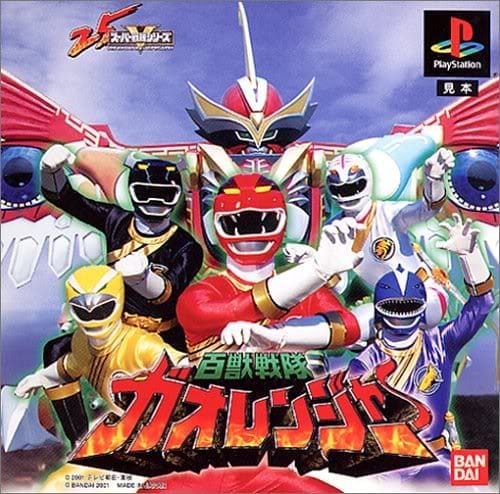
- Developer: Natsume
- Release Date: February 17, 2002
- Genre: Action
Before Power Rangers fully dominated Western kids’ TV, Japan’s Super Sentai series had already been thrilling audiences for decades. Hyakujuu Sentai Gaoranger brought that colorful, over-the-top action to the PlayStation in a way that feels equal parts cheesy and charming. You pick from the Gaorangers and dive into missions that play out like bite-sized episodes of the show—complete with acrobatic martial arts, flashy special attacks, and giant mecha battles that escalate the spectacle. The presentation is pure Saturday morning fun, brimming with exaggerated villains, transformation sequences, and explosive finishers that capture the campy energy of tokusatsu television.
Why It's Worth Playing: While it never left Japan, Gaoranger is a delightful slice of Sentai history that fans of Power Rangers and tokusatsu will adore. It’s not a deep or complex game, but its charm lies in how faithfully it replicates the look, feel, and rhythm of the TV series. From the vibrant costumes to the climactic robot showdowns, it’s a hidden gem that embodies the joyful absurdity of early-2000s Sentai. For anyone willing to embrace its colorful camp, it’s a blast of pure nostalgic fun.
Tiny Tank: Up Your Arsenal
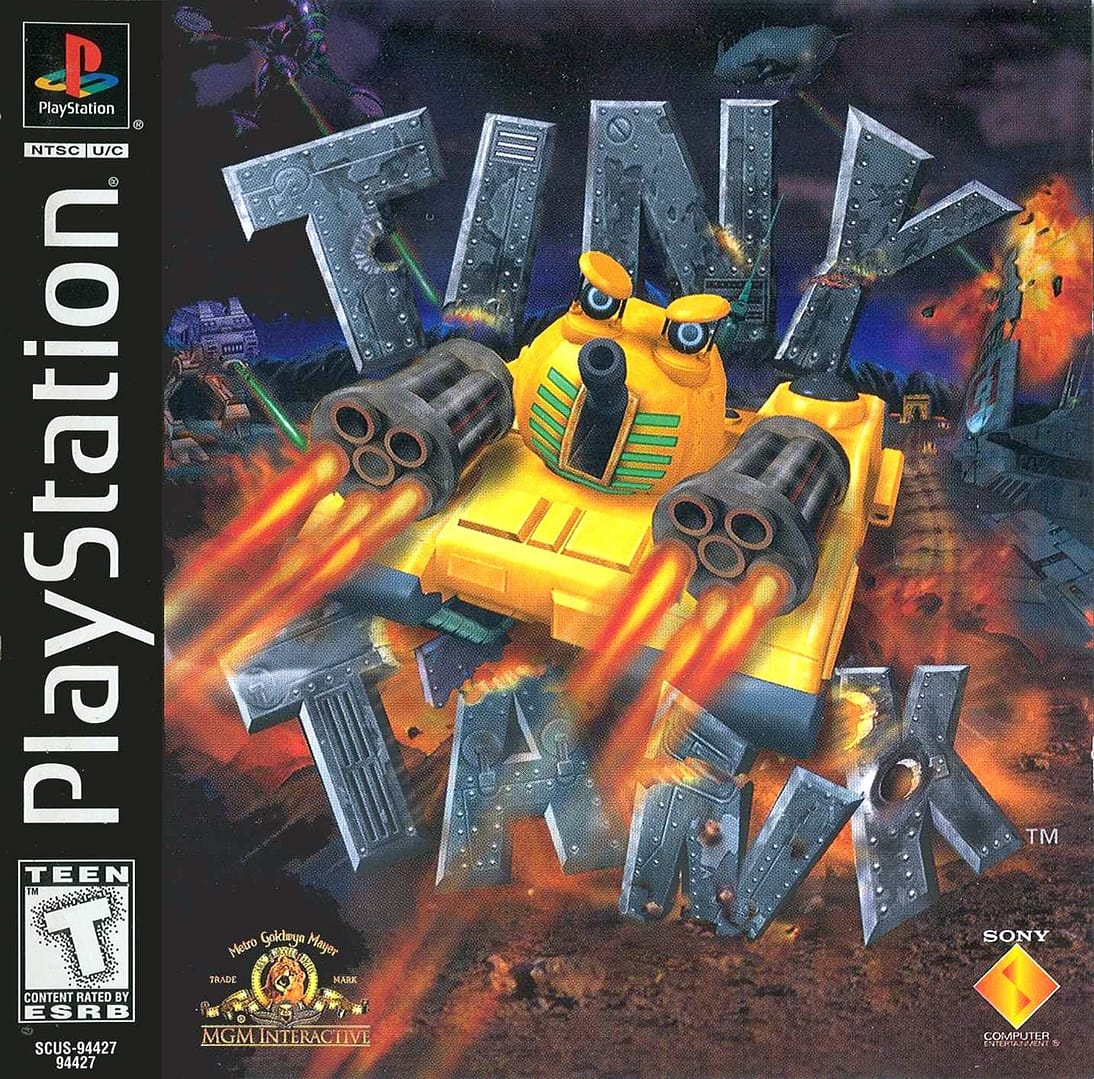
- Developer: Appaloosa Interactive, AndNow
- Release Date: August 31, 1999
- Genre: Platformer, Third-Person Shooter
Tiny Tank is what happens when you take the firepower of a mech shooter and mix it with the humor of a Saturday morning cartoon. You control Tiny Tank, a wisecracking, self-aware war machine built to save humanity after rogue A.I. drones turn on their creators. The game doesn’t just lean into absurdity—it dives headfirst, with slapstick cutscenes, snappy one-liners, and colorful environments that contrast with the explosions you’re constantly causing. Beneath the humor, though, lies a surprisingly solid third-person action game, with plenty of weapons to upgrade, enemies to blast, and levels that keep the chaos flowing.
Why It's Worth Playing: Tiny Tank is a hidden gem because it never takes itself too seriously, yet still delivers a fun, explosive experience. Its mix of comedy and action sets it apart from the grittier shooters that dominated the era, and its personality shines through in every mission. For players who love games with character—and a healthy dose of mayhem—it’s a PlayStation curio that deserves another run on the battlefield.
Silent Bomber
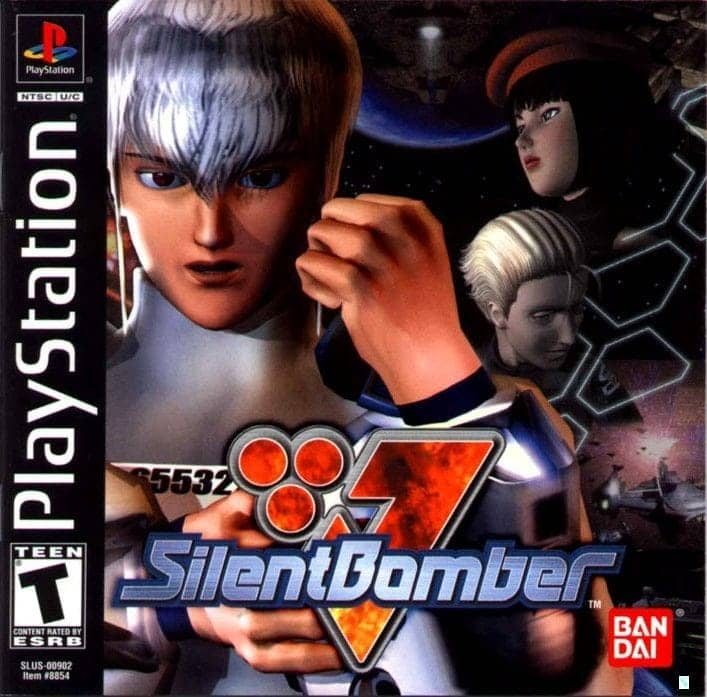
- Developer: CyberConnect
- Release Date: February 29, 2000
- Genre: Action
Few PS1 action games feel as fast, frantic, and stylish as Silent Bomber. Instead of relying on guns or swords, you play as Jutah Fate, a genetically engineered soldier who fights with bombs—lots of bombs. The catch? You don’t just lob them—you lay or attach them strategically, setting up explosive chain reactions that can wipe out entire waves of enemies in seconds. Missions play out across industrial bases, military ships, and enemy strongholds, all drenched in that gritty, metallic ’90s sci-fi aesthetic. Between the slick anime-style cutscenes and the pulse-pounding pace, the game radiates a kind of cool that feels inseparable from its era.
Why It's Worth Playing: Silent Bomber endures because it’s so different from the standard shooters and hack-and-slash titles of its time. It demands quick reflexes and clever planning, rewarding players who can think two steps ahead while still keeping the action breakneck. Add in a surprisingly dark storyline and some excellent boss battles, and you’ve got a game that deserves far more recognition than it ever received. For fans of inventive mechanics and pure arcade adrenaline, it’s a PS1 hidden gem that’s still explosive today.
MDK
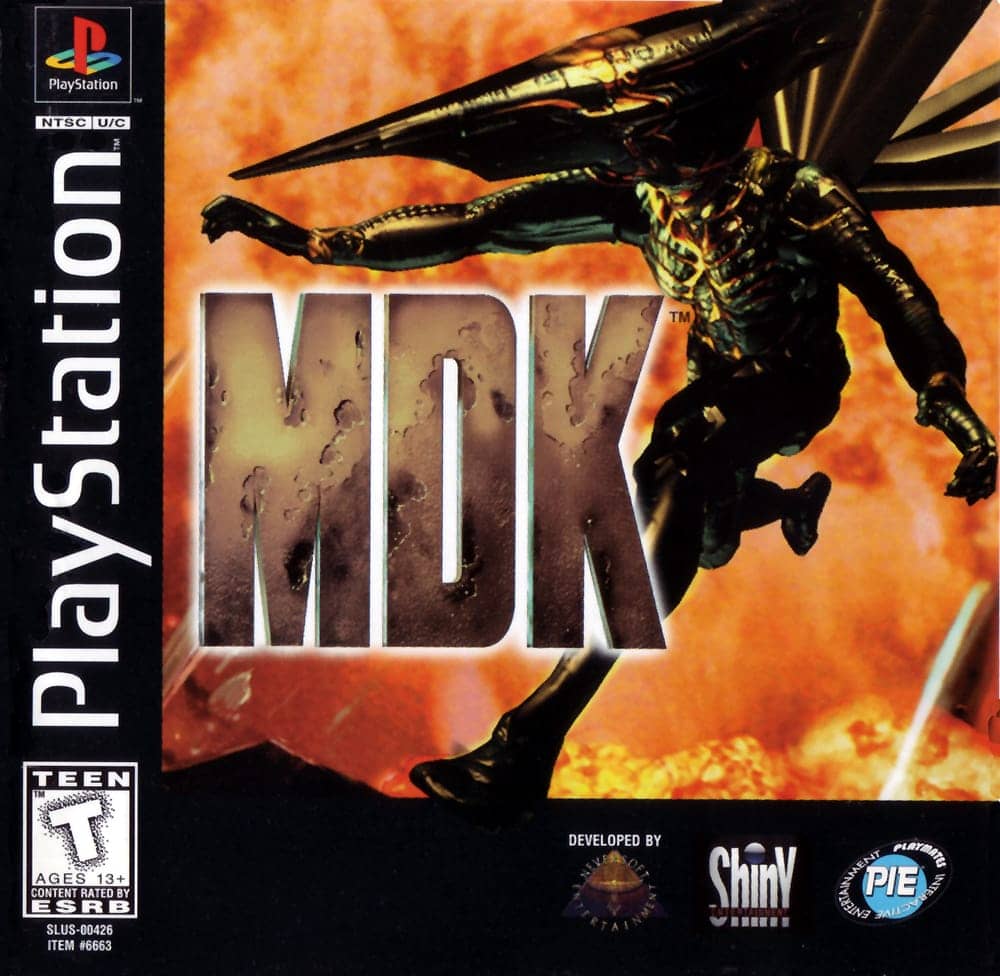
- Developer: Shiny Entertainment
- Release Date: April 30, 1997
- Genre: Third-Person Shooter
MDK is one of those games that feels like it could only have come from the late ’90s—a cocktail of experimental gameplay, tongue-in-cheek humor, and futuristic weirdness. You step into the bizarre coil suit of Kurt Hectic, an unlikely hero tasked with stopping an alien invasion by parachuting onto giant mining ships and taking them apart from the inside. Armed with a sniper helmet, a ribbon-like parachute, and an absurd arm-mounted chain gun, Kurt’s missions are as strange as they are thrilling. One moment you’re sniping enemies from impossible distances, the next you’re gliding over vast alien machinery, all set to a backdrop of surreal sci-fi design and a healthy dose of slapstick comedy.
Why It's Worth Playing: MDK stands out because it never plays it safe. It’s part third-person shooter, part platformer, and part fever dream, yet it all comes together in a way that feels oddly cohesive. Its sense of humor, eccentric weapons, and imaginative level design give it a personality that few PS1 games could match. For players craving something bold, offbeat, and unmistakably ’90s, MDK remains a hidden gem well worth revisiting.
Psychic Force
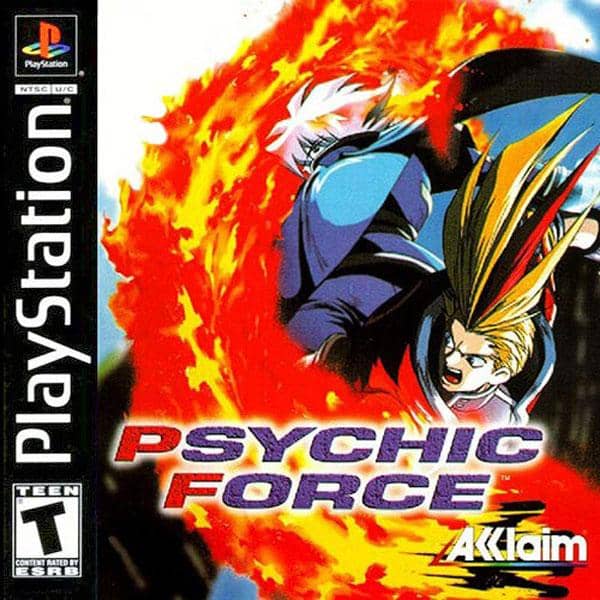
- Developer: Taito
- Release Date: October 4, 1996
- Genre: Fighting
Long before 3D arena fighters became commonplace, Psychic Force carved out its own niche with a bold premise: fighters who don’t just punch and kick, but soar through the air and hurl psychic blasts like anime superheroes. Matches unfold inside a cubic arena where combatants can hover, dash, and unleash elemental powers ranging from firestorms to ice walls. The result is a kinetic, almost cinematic experience that felt light-years away from the grounded brawlers of its era. Its colorful cast of psychic warriors, each with their own over-the-top flair, only added to the game’s anime-inspired energy.
Why It's Worth Playing: While Psychic Force never hit mainstream fighting-game fame, it remains an overlooked innovator. The freedom of movement, creative special attacks, and flashy presentation laid the groundwork for the arena fighters that would later dominate. For fighting fans who think they’ve seen it all, this one still feels fresh—like a forgotten prototype for the wild, airborne duels of modern anime fighters. If you’ve ever wanted to feel like you’re battling inside an OVA from the ’90s, Psychic Force delivers that fantasy in spades.
Vib-Ribbon
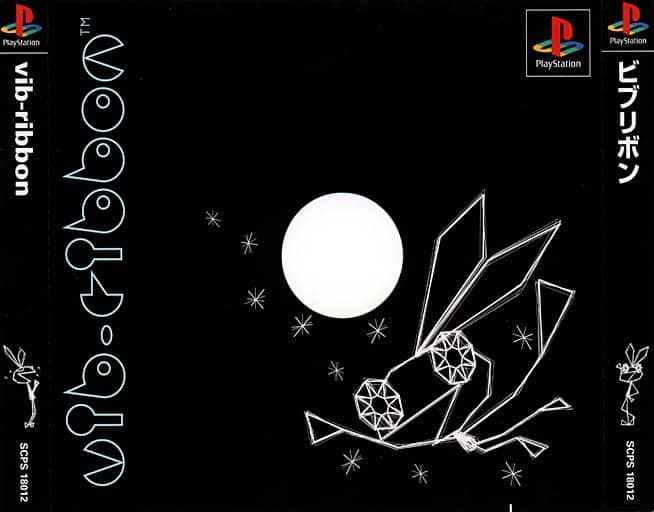
- Developer: NanaOn-Sha
- Release Date: December 9, 1999
- Genre: Rhythm
Few games embody PlayStation-era experimentation quite like Vib-Ribbon. At first glance, it looks impossibly simple: a wireframe rabbit named Vibri dashes along a shifting line, leaping, ducking, and twisting to the beat. But here’s the magic—the game generates levels from any music CD you put into the console. That meant your favorite albums instantly became custom rhythm stages, turning Vib-Ribbon into something personal, unpredictable, and endlessly replayable. The minimalist vector graphics weren’t just stylish; they ensured the rabbit’s surreal dance synced perfectly with the beat, making every jump and dodge feel hypnotically satisfying.
Why It's Worth Playing: Vib-Ribbon is a testament to pure creativity. It didn’t need flashy visuals or a massive budget—just a brilliant concept executed with charm. Its ability to morph into whatever rhythm you fed it gave players a sense of ownership and novelty that few rhythm games have ever matched. Even today, it feels fresh, experimental, and utterly original. For anyone who loves music games—or just appreciates the PlayStation’s willingness to get weird—this little wireframe rabbit remains one of the console’s coolest hidden treasures.
iS: Internal Section
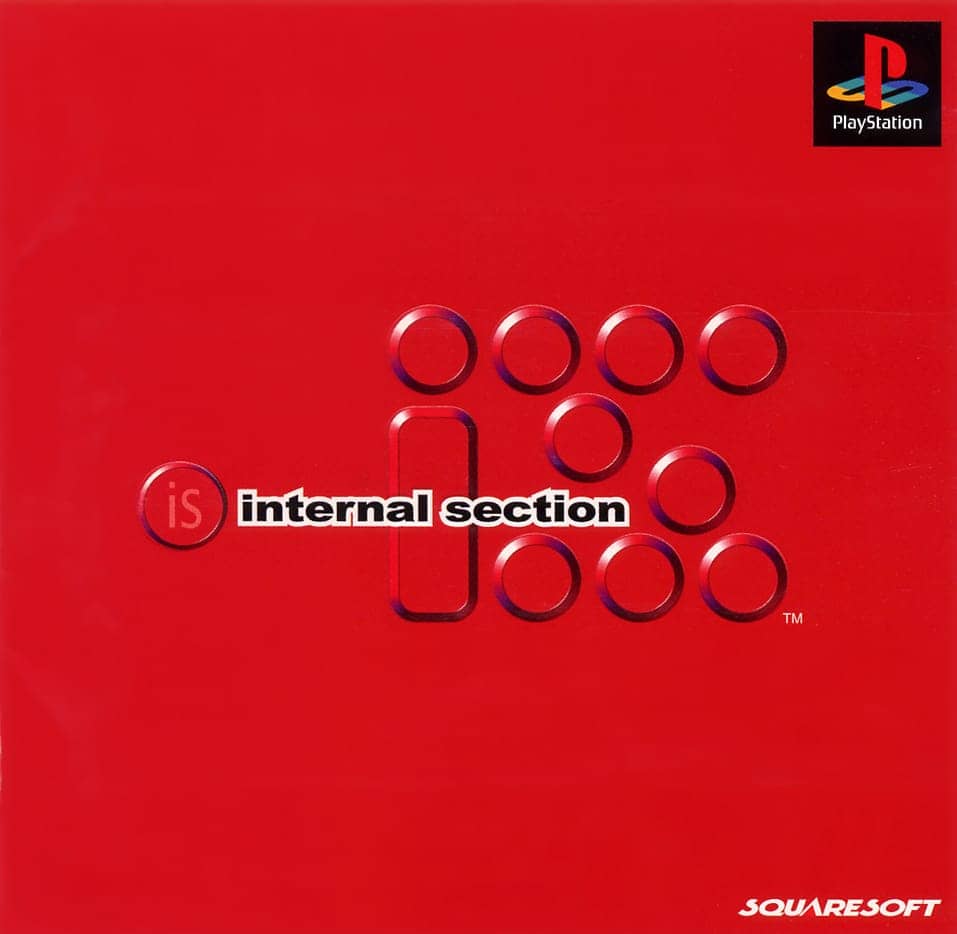
- Developer: Taito
- Release Date: August 12, 1999
- Genre: Shooter, Rhythm
Part shooter, part audiovisual trip, iS: Internal Section is one of the most mesmerizing experiences on the PlayStation. At its core, it’s a tube shooter—your craft zips through endless wireframe tunnels while enemies and obstacles materialize in sync with the pounding techno soundtrack. What makes it stand out is the aesthetic: stark lines, neon bursts, and hypnotic geometry that turn every run into a trance-like flow state. Long before Rez captured mainstream attention, iS: Internal Section was already experimenting with the fusion of gameplay, sound, and minimalist design in a way that felt more like digital art than a traditional video game.
Why It's Worth Playing: iS: Internal Section isn’t just a hidden gem—it’s a forgotten pioneer. It captures that rare sense of being inside the music, letting players lose themselves in rhythm and reaction. Its combination of wireframe visuals, pulsing beats, and relentless forward momentum makes it feel timeless, almost futuristic even now. It's not a game for everyone, but if you're looking for something that's truly outside the box, you have to give this a shot. This is definitely one of PlayStation’s most groundbreaking experiments.
Omega Boost
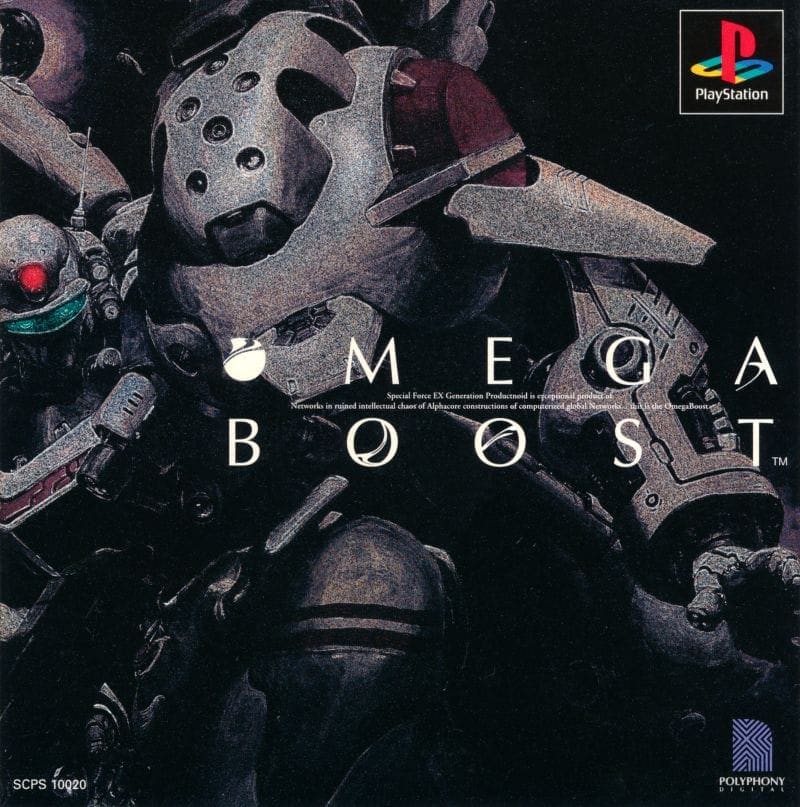
- Developer: Polyphony Digital
- Release Date: August 31, 1999
- Genre: Shmups
I know what you’re thinking. Polyphony Digital? The Gran Turismo guys? Yep, the same. But before they were perfecting the art of racing simulation, they made one of the most visually stunning and criminally underrated shooters on the PS1. Omega Boost is a high-speed, 3D rail shooter that puts you in the cockpit of a futuristic mech and sends you on a mission to destroy a rogue AI. The game’s sense of scale is fantastic, and the bosses are absolutely massive and intimidating.
Why It's Worth Playing: The game's visuals are incredible for the PS1, with beautiful pre-rendered backgrounds and fast-paced action. The combat is fluid and satisfying, and the sense of speed is exhilarating. It's a game that shows a different side of a legendary developer and a perfect example of a hidden gem that deserves to be played. It's an absolute blast.
Colony Wars
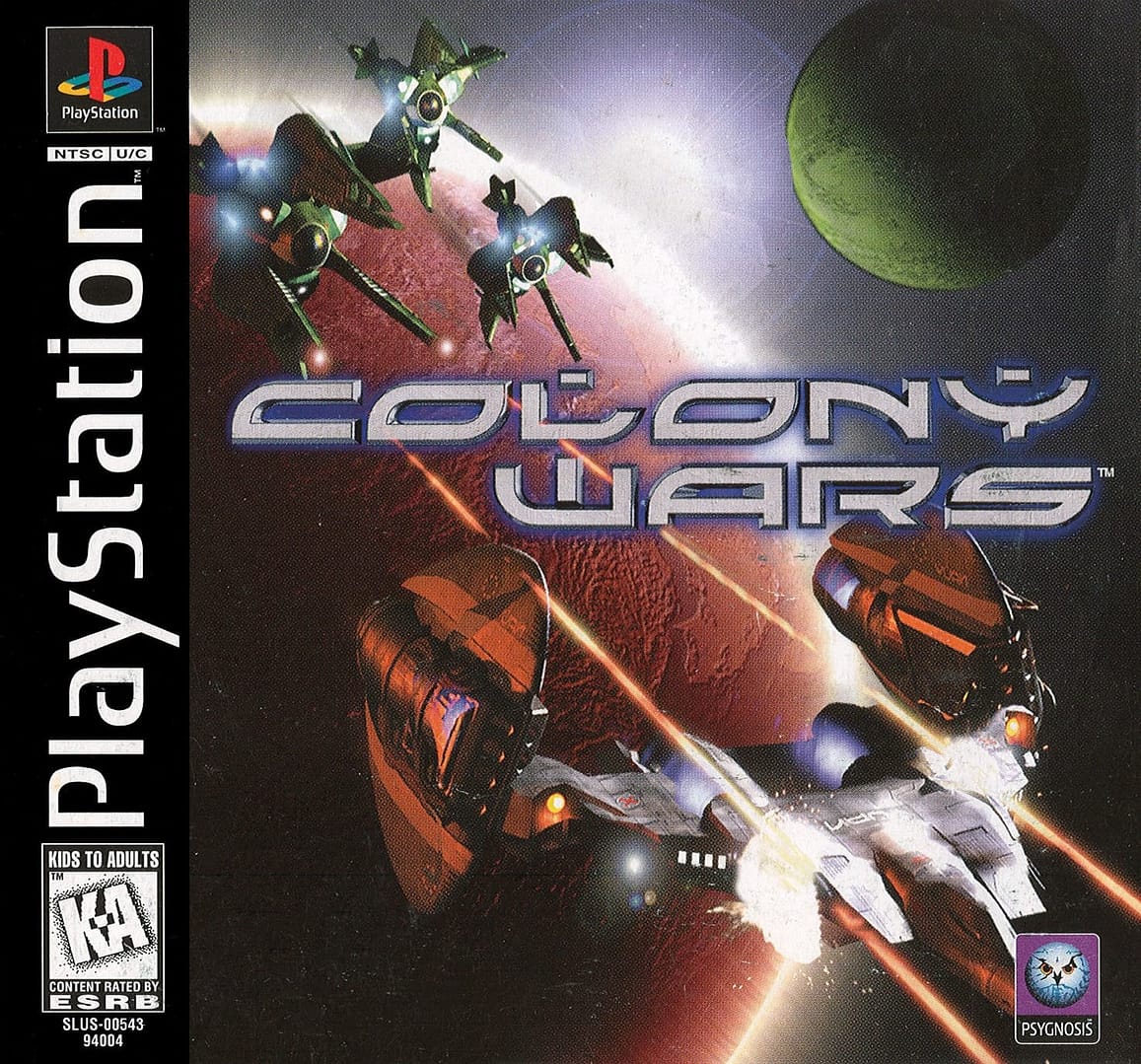
- Developer: Psygnosis
- Release Date: November 4, 1997
- Genre: Action, Simulation
Colony Wars was Psygnosis firing on all cylinders, delivering a cinematic space sim that pushed the PlayStation in directions few other games dared. Instead of being a simple arcade shooter, it presented branching campaigns, full voice acting, and missions that felt straight out of a sci-fi blockbuster. One failed objective didn’t mean game over—it meant the war effort shifted, the story adapted, and the universe felt alive in a way rarely seen at the time.
Why It’s Worth Playing: If you’ve ever dreamed of piloting a starfighter with both weight and purpose, Colony Wars nails it. The controls are smooth, the visuals are stunning for the era, and the story packs real consequence. For fans of space combat, this is the PlayStation’s definitive starfield.
Vanark
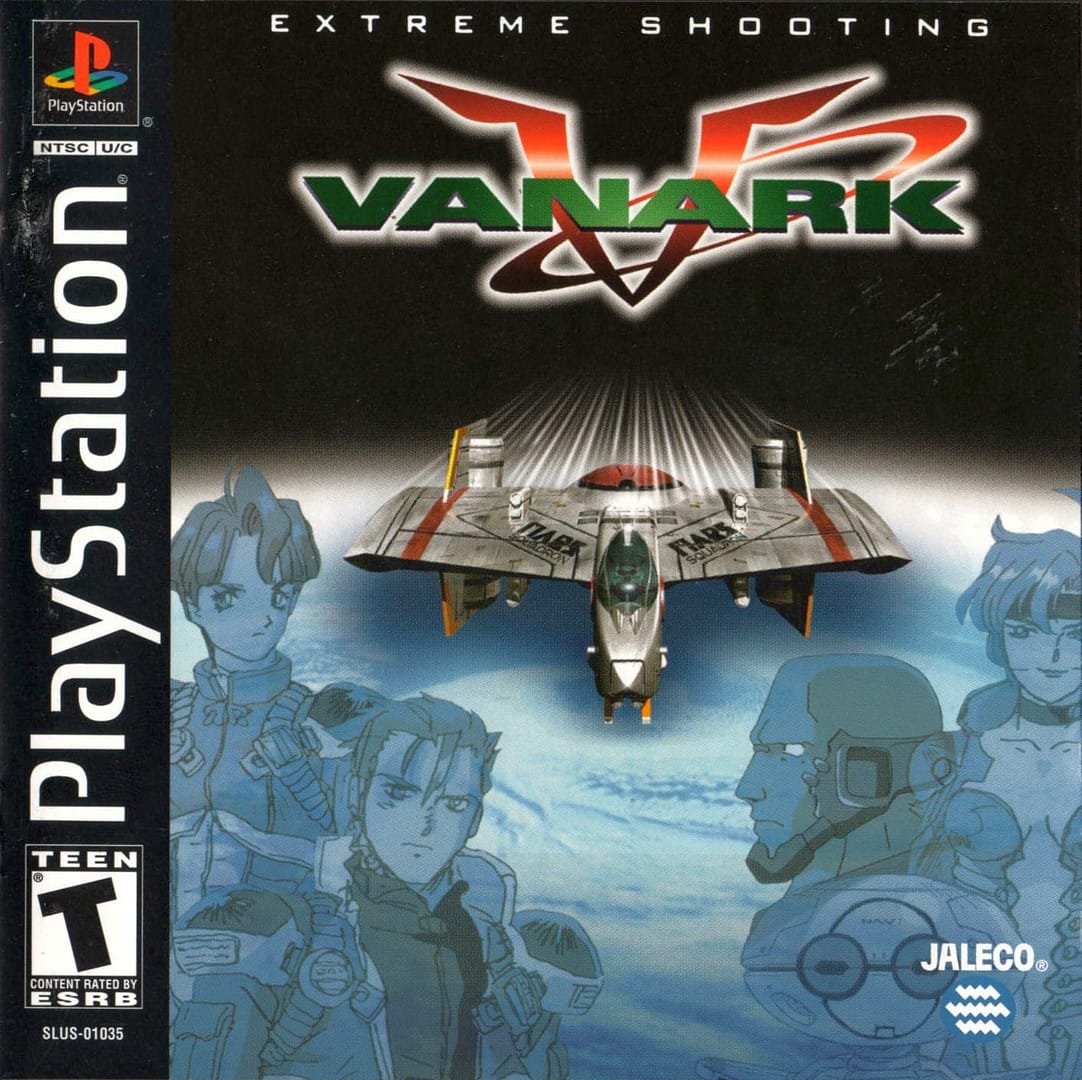
- Developer: Excite
- Release Date: July 29, 1999
- Genre: Rail Shooter
Vanark is one of those super obscure PS1 games that’s a total blast. This sci-fi shooter is part on-rails and part free-roaming space combat, and get this: it seamlessly transitions between the two. You’ll be zipping through a trench, and then all of a sudden, you’re in open space, dogfighting with enemies. It’s wild. The visuals are absolutely killer for a PS1 game, too. The ships look incredible, and the explosions are just fantastic.
Why It's Worth Playing: This game is a technical marvel. The seamless transitions between gameplay styles are a testament to the developer's skill, and the game's visuals are some of the best on the system. It's a game that shows what's possible when a developer isn't afraid to take a chance on a new idea. It's a must-play for any fan of sci-fi shooters.
Gamera 2000
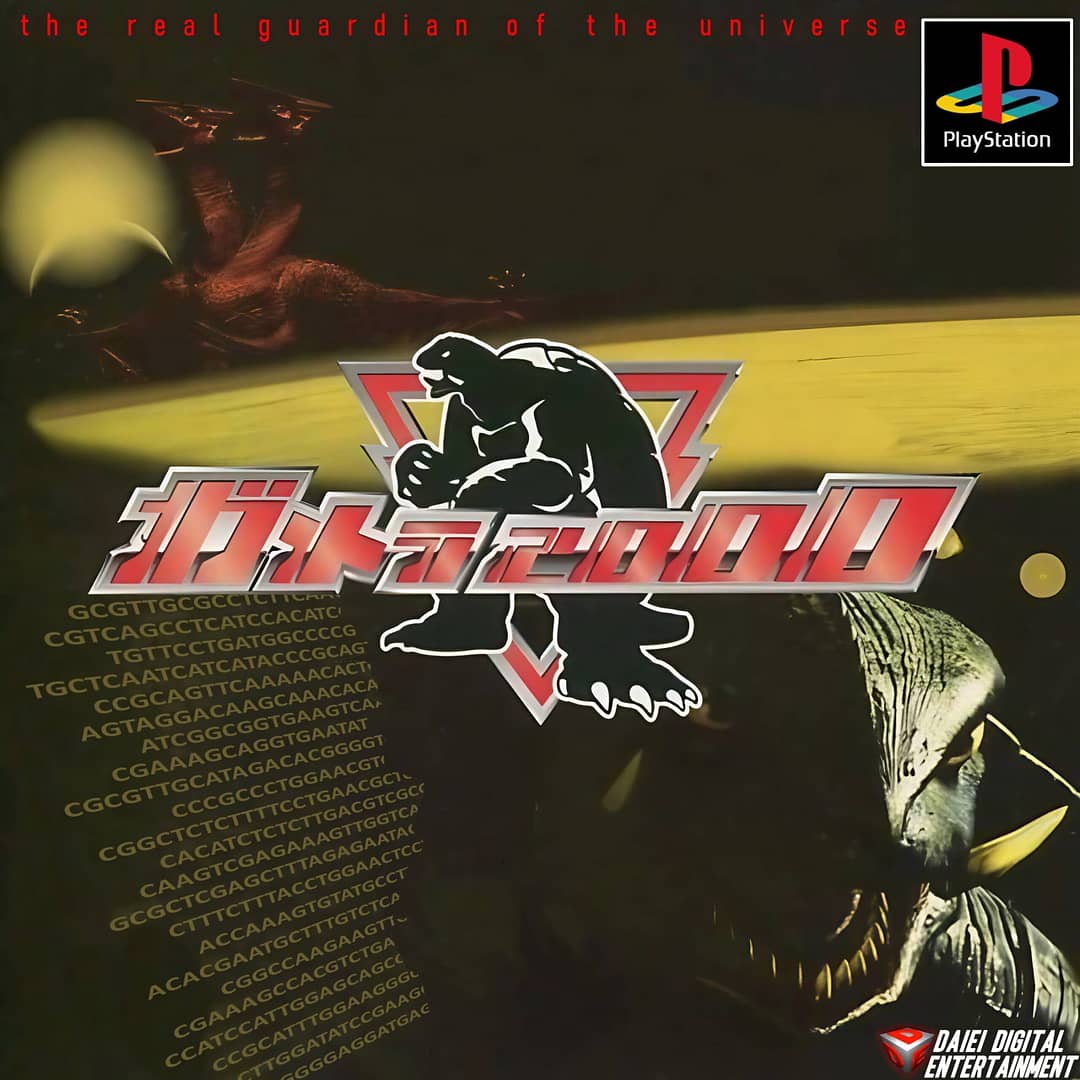
- Developer: I’Max
- Release Date: November 22, 1997
- Genre: Action
Imagine Panzer Dragoon but with giant monsters, and you’ve got the essence of Gamera 2000. This rail shooter lets you soar through cities, oceans, and alien landscapes while blasting hordes of enemies—and the kicker is that you’re fighting alongside none other than Gamera, Japan’s most beloved giant turtle kaiju. The game’s cinematic presentation, booming soundtrack, and over-the-top boss fights make it feel like you’re starring in a Saturday night monster movie marathon. Between the FMV cutscenes and explosive set pieces, it nails that campy-yet-epic energy that kaiju fans adore.
Why It's Worth Playing: The game's sense of scale is its greatest strength. The bosses are absolutely massive, and the sense of fighting a giant monster in a futuristic jet is incredibly satisfying. It's a great example of a genre that was once very popular and has since become a hidden gem. It's a perfect game to scratch that rail shooter itch.
Bishi Bashi Special

- Developer: Konami
- Release Date: October 29, 1998
- Genre: Arcade
If WarioWare had a wild older cousin on a sugar rush, it would be Bishi Bashi Special. This riotous collection of mini-games throws players into one absurd scenario after another: frantically eating sushi, racing in clown cars, or mashing buttons to outpace a rival in the most nonsensical contests imaginable. The humor is distinctly Japanese, leaning hard into the surreal and slapstick, while the pace is relentless—games often last only a few seconds before shoving you into the next slice of chaos. Best played with friends, it’s a button-mashing party game that thrives on energy, confusion, and laughter.
Why It's Worth Playing: Few PS1 titles capture pure, unfiltered fun like Bishi Bashi Special. It’s a perfect couch multiplayer game, designed less around mastery and more around seeing who can keep up when the game throws another curveball. Its cult following comes from its unapologetic weirdness and the way it transforms competitive play into comedy. If you want a party game that feels like an arcade fever dream, this is it.
Incredible Crisis
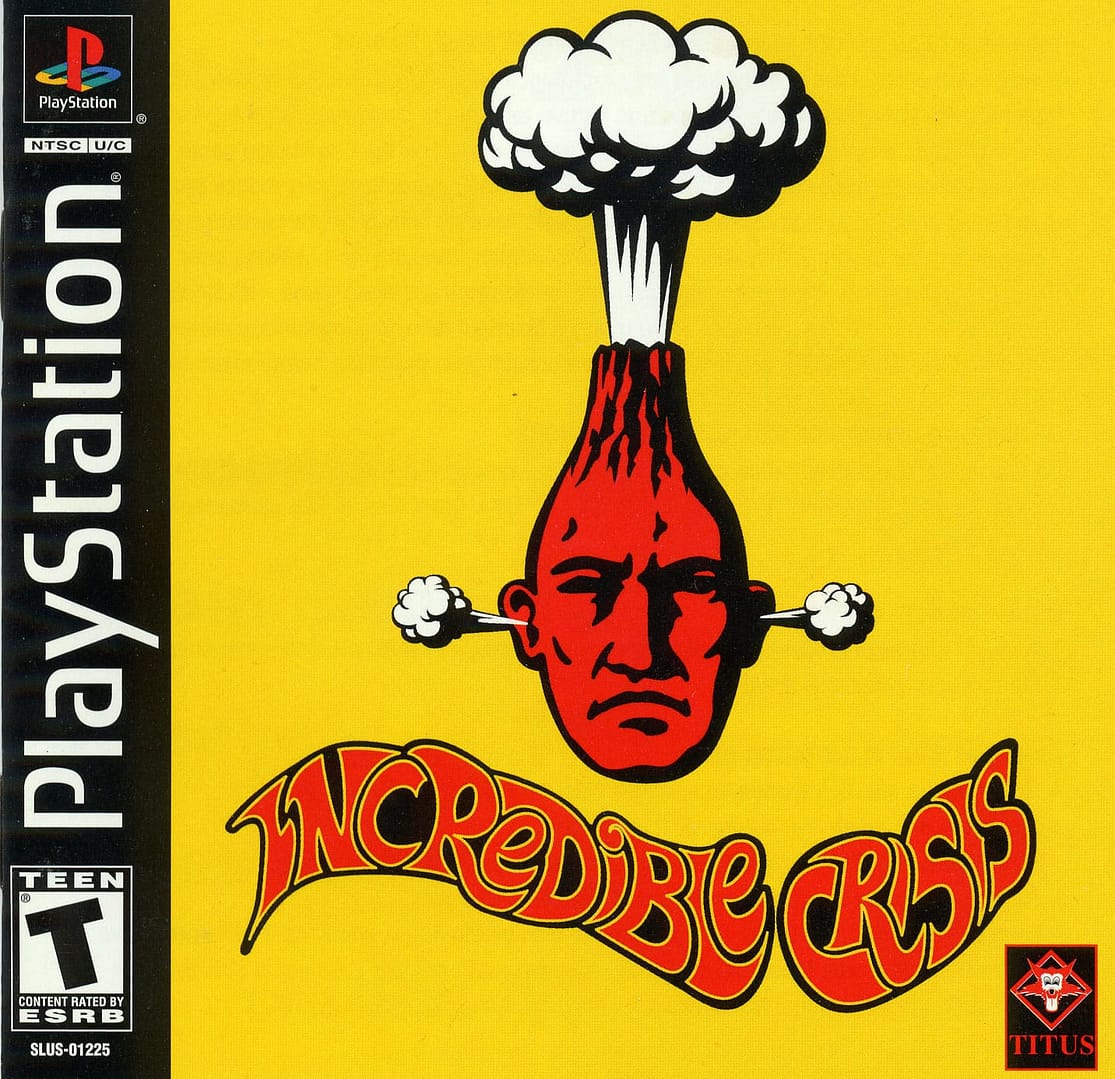
- Developer: Polygon Magic
- Release Date: June 24, 1999
- Genre: Action, Arcade
I’ve told you before that the PS1 was a hotbed for weird, right? Well, Incredible Crisis is the weirdest. It’s a rhythm-action game, a live-action Japanese comedy, and a surreal fever dream all rolled into one. The premise is simple: a Japanese family is trying to get home for their grandmother’s birthday, and every single obstacle is a mini-game. From trying to escape a falling-apart building to dodging a giant man on a unicycle, the game is a masterclass in pure, unfiltered chaos.
Why It's Worth Playing: Incredible Crisis is an experience you have to see to believe. The live-action cutscenes are hilarious, the mini-games are inventive and often bizarre, and the game's sense of humor is top-notch. It's a game that could only have been made in that era, and it's a perfect example of a developer throwing everything at the wall to see what sticks. And in this case, it all sticks. It's an unforgettable trip.
Gekido: Urban Fighters

- Developer: NAPS Team
- Release Date: May 18, 2000
- Genre: Beat ’em Up
Gekido: Urban Fighters arrived late in the PlayStation’s life, when 3D brawlers were already fading into obscurity. But it had one thing going for it—style. This was a beat ’em up that wore its late-’90s attitude proudly, with exaggerated character designs, pulsing techno beats, and a frenetic pace that made every street fight feel like a rave gone wrong. The combat was flashy and combo-heavy, borrowing a little from fighters while keeping the raw, knuckle-cracking essence of classic side-scrollers alive.
Why It's Worth Playing: If you’ve ever wished Final Fight and Tekken had a wild, fashion-forward cousin, Gekido is that game. It’s unapologetically over the top, a reminder of when developers weren’t afraid to go bold with aesthetics and soundtracks. Forgotten by most, but adored by those who stumbled onto it, this one’s a cult favorite waiting for a second look.
Asuka 120% BURNING Fest. Final
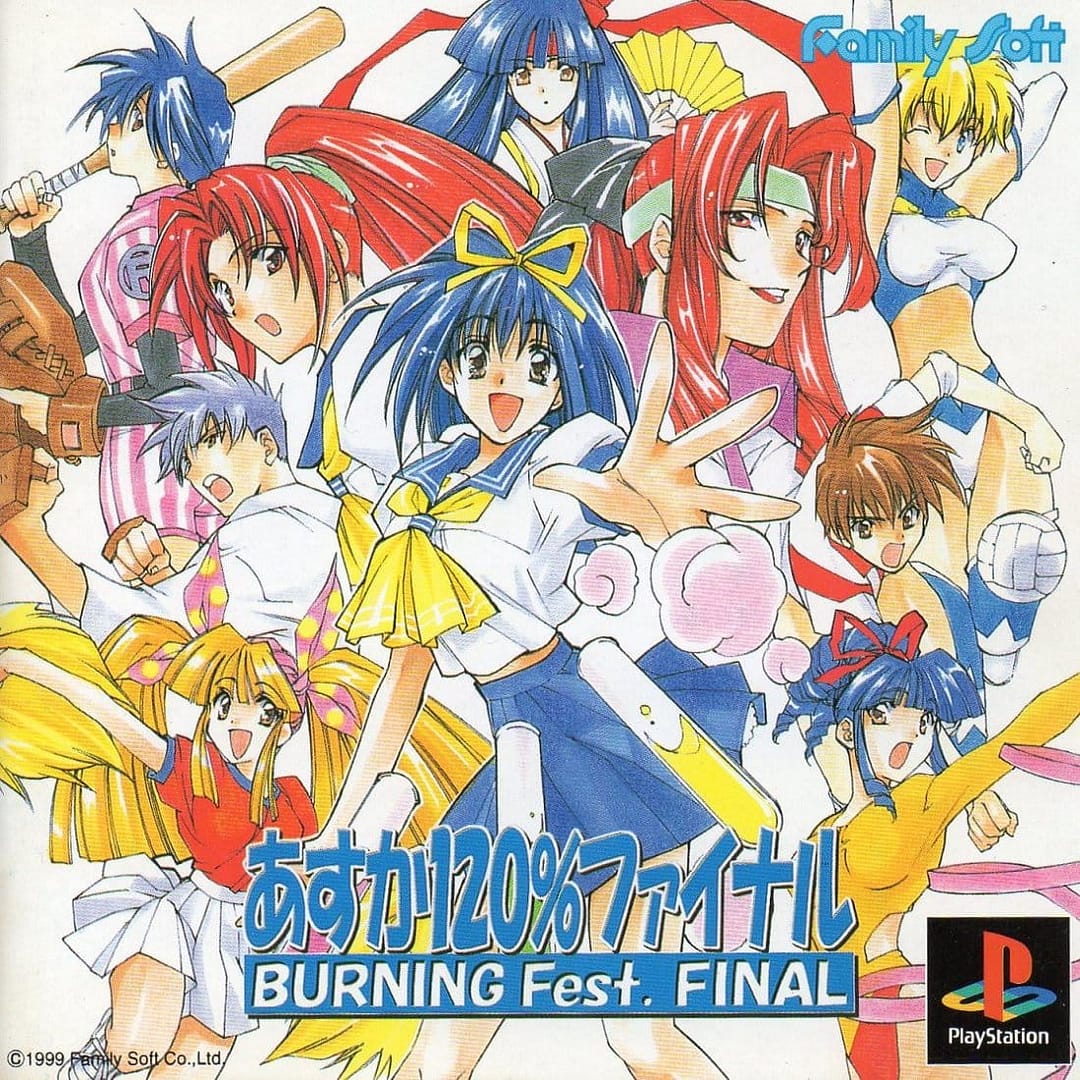
- Developer: Fill-in-Cafe, Success
- Release Date: May 27, 1999
- Genre: Fighting
Asuka 120% BURNING Fest. Final is one of those fighters that never got the global spotlight it deserved. At first glance, it looks like a quirky anime brawler featuring a roster of schoolgirls with wildly different fighting styles—but beneath the colorful presentation lies one of the most fast-paced and combo-heavy 2D fighters on the PlayStation. With air juggles, chain cancels, and a ridiculous level of speed, it feels like the kind of game designed to push your reflexes to the limit while rewarding creativity.
Why It's Worth Playing: BURNING Fest. Final isn’t just another “cute fighter” — it’s a technical gem that hardcore fans still praise for its depth. It balances chaos and precision beautifully, and every match feels like a highlight reel waiting to happen. If you’re hunting for a hidden gem in the PS1’s crowded fighting library, this is one of the most underrated picks you can make.
Crisis Beat

- Developer: Soft Machine
- Release Date: June 18, 1998
- Genre: Beat ’em Up
If you ever watched an ’80s or ’90s action movie and thought, “I wish I could punch my way through that,” well, then Crisis Beat is your dream come true. This is a 3D beat ’em up that is all about cinematic action. You and a friend can play as a pair of characters, fighting your way through a cruise liner that’s been taken over by terrorists. The game has a great sense of momentum, with the action moving seamlessly from room to room, and some fantastic set pieces. The combat is fast and fluid, and the game truly feels like a playable action movie.
Why It's Worth Playing: Crisis Beat is a great example of a beat 'em up that got it right in 3D. The combat is incredibly satisfying, and the game's sense of style is top-notch. The story is cheesy, in the best possible way, and the game just leans into its own ridiculousness. It's a fantastic co-op experience and a must-play for any fan of the genre.
S.C.A.R.S.
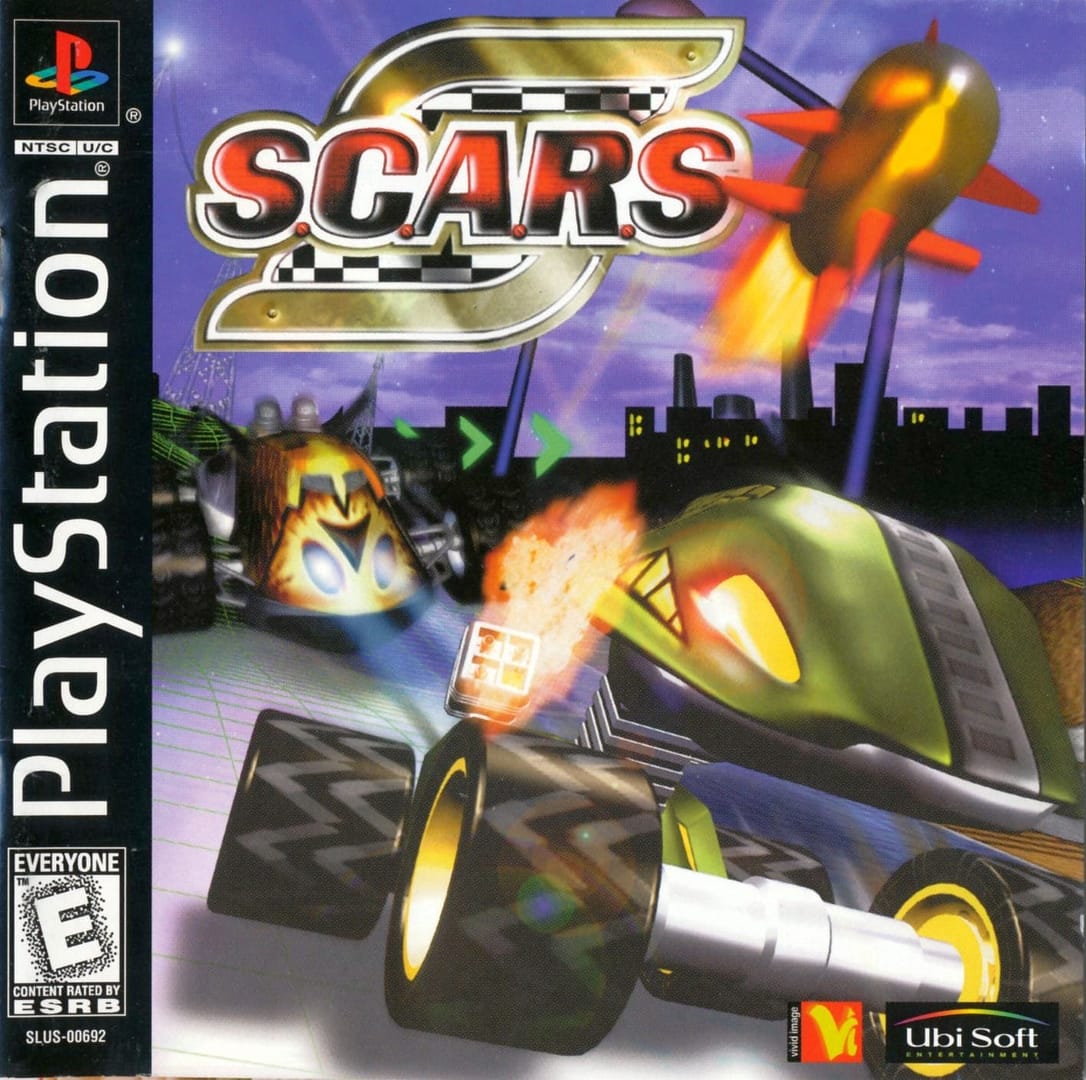
- Developer: Ubi Soft
- Release Date: September 25, 1998
- Genre: Racing
Supersonic Crash Alley Racing Syndrome—better known as S.C.A.R.S—is the kind of racing game that leans hard into late-’90s weirdness. Instead of standard cars, you’re behind the wheel of animal-themed vehicles: panther speedsters, rhino bruisers, scorpion stingers, and more. The result? A hybrid of kart racer and combat brawler where courses are littered with hazards, traps, and enough weapon pick-ups to turn every lap into a demolition derby.
Why It's Worth Playing: This is a game that is all about fun. The combat is chaotic, the weapons are hilarious, and the tracks are a blast to race on. It's a fun and inventive racer that never got its due, and it's a great example of a developer taking a chance on a new idea. For every Wipeout or Gran Turismo, there were a dozen PS1 racers that came and went, but S.C.A.R.S. is one you should have remembered.
Initial D
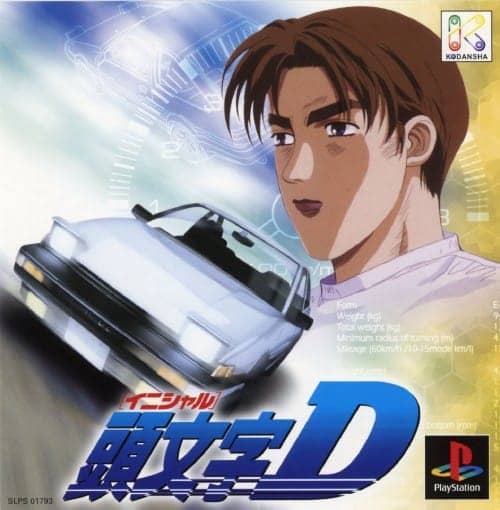
- Developer: Kodansha
- Release Date: June 24, 1998
- Genre: Racing
Alright, gearheads, this one is for you. Before the series became a worldwide cult obsession, Initial D made its first big skid onto the PS1 with this Japan-exclusive racer. It captured the essence of drifting culture straight out of the manga and anime—tight mountain passes, night races, and that unmistakable Eurobeat-fueled vibe. The physics leaned hard into oversteer, encouraging players to master controlled drifts rather than just slam the accelerator. While the visuals show their age, the energy of the source material burns bright here.
Why It's Worth Playing: The game's simplicity is its greatest strength. It's a game that gets out of its own way and just lets you focus on the driving. The feeling of a perfectly executed drift is so satisfying that you'll keep coming back for more. As an early attempt to bring drifting to consoles, it’s rough yet groundbreaking. Fans of Initial D will appreciate its faithful nods to the series, while racing enthusiasts will see it as a foundation for the drift-focused games that followed.
Racing Lagoon
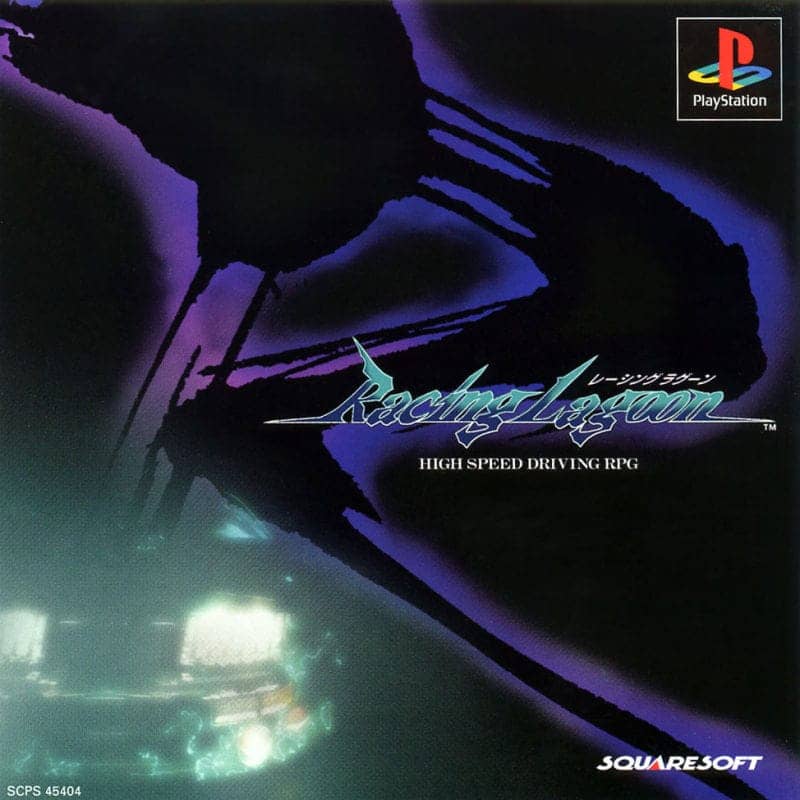
- Developer: Squaresoft
- Release Date: June 10, 1999
- Genre: Racing, RPG
Racing Lagoon is one of Square’s strangest, boldest experiments: a full-blown RPG wrapped around the world of late-night street racing. Set in a neon-drenched Yokohama, the game blends cinematic storytelling with high-speed battles on winding highways. You don’t just race—you earn experience, tune your car, and watch your journey unfold like a gritty urban drama. It’s equal parts Final Fantasy and Initial D, with moody jazz-fusion music setting the tone.
Why It's Worth Playing: Few games dared to merge role-playing systems with street racing, and even fewer pulled it off this well. With its stylish presentation, branching narrative, and truly unique atmosphere, Racing Lagoon stands as one of the most unforgettable PS1 imports. For fans of experimental design, this is Square at its most fearless.
Bomberman Fantasy Race
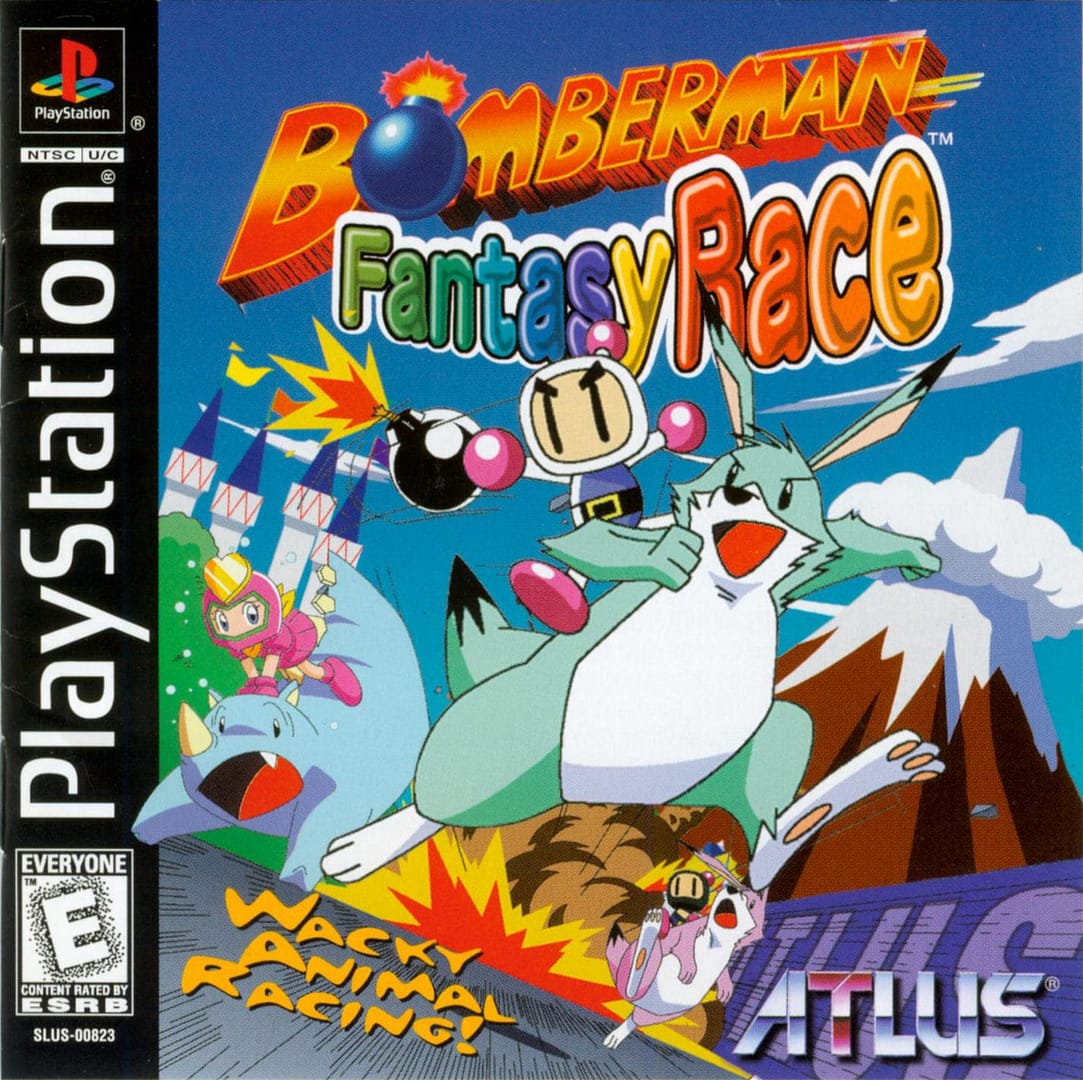
- Developer: Hudson Soft
- Release Date: March 31, 1999
- Genre: Racing
Okay, let’s get a little weird. You know Mario Kart, right? Now, what if you swapped out the go-karts for giant kangaroos and the power-ups for Bomberman’s signature explosives? You’d have Bomberman Fantasy Race. This is a kart racer with a ton of charm, a unique gameplay mechanic, and a chaotic, family-friendly vibe. It’s as colorful and chaotic as you’d expect from a Bomberman title, with bombs replacing turtle shells and shortcuts hidden in every corner. The racing is fast, the tracks are quirky, and the whole thing radiates that late-’90s party game energy.
Why It's Worth Playing: The game's charm is off the charts. The characters are adorable, the tracks are colorful, and the game's sense of humor is top-notch. It's a game that is all about pure, unadulterated fun, and it's a great example of a developer taking a well-worn genre and giving it a unique twist. It's a must-have for any party.
Conclusion
We’ve now reached the end of our journey, and what a trip it’s been. These hidden gems remind us of a time when developers threw wild ideas at the wall—sometimes polished, sometimes scrappy, always fascinating.
Revisiting them today isn’t just about nostalgia. It’s about rediscovering risk-taking, strangeness, and personality in games that weren’t afraid to live outside the spotlight. Whether it’s piloting a submarine through uncharted depths, button-mashing your way through surreal party games, or drifting down neon-soaked mountain roads, the PS1’s forgotten treasures still sparkle.
The beauty of hidden gems is simple: they’re time capsules. Crack one open, and you’re transported back to a world where creativity reigned and boundaries were meant to be broken. And if you’ve never played them before? Well, now’s the perfect time to start digging. Did I miss any of your favorites? Hit me up in the comments. And until next time, keep digging for those digital treasures.

